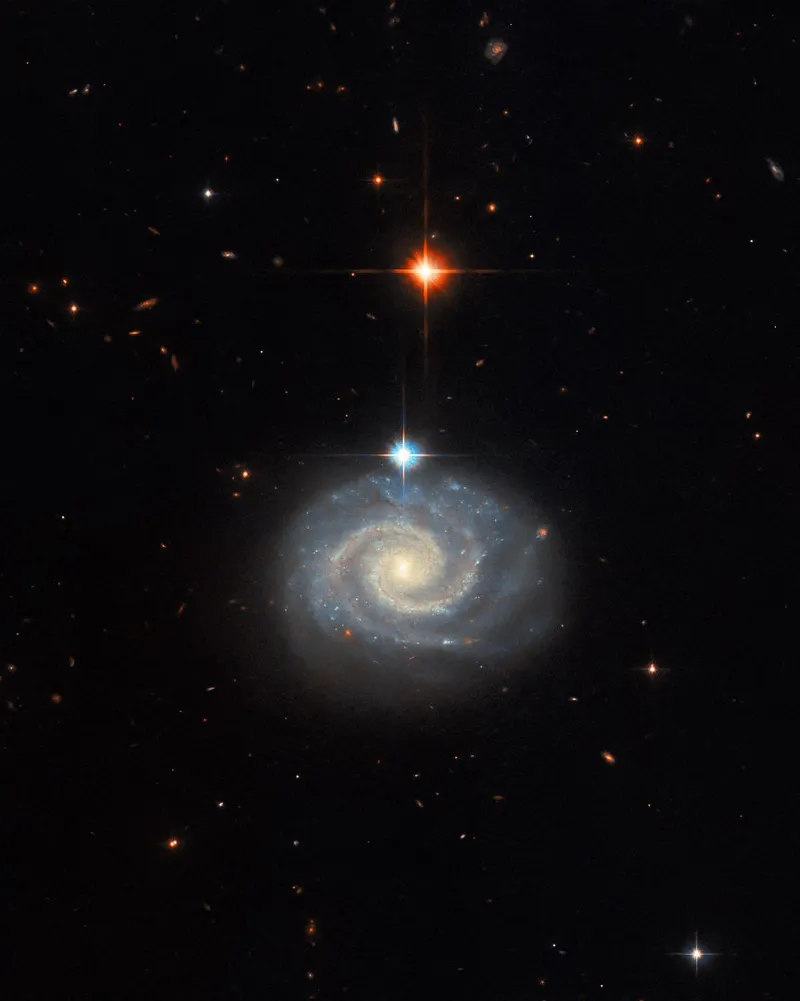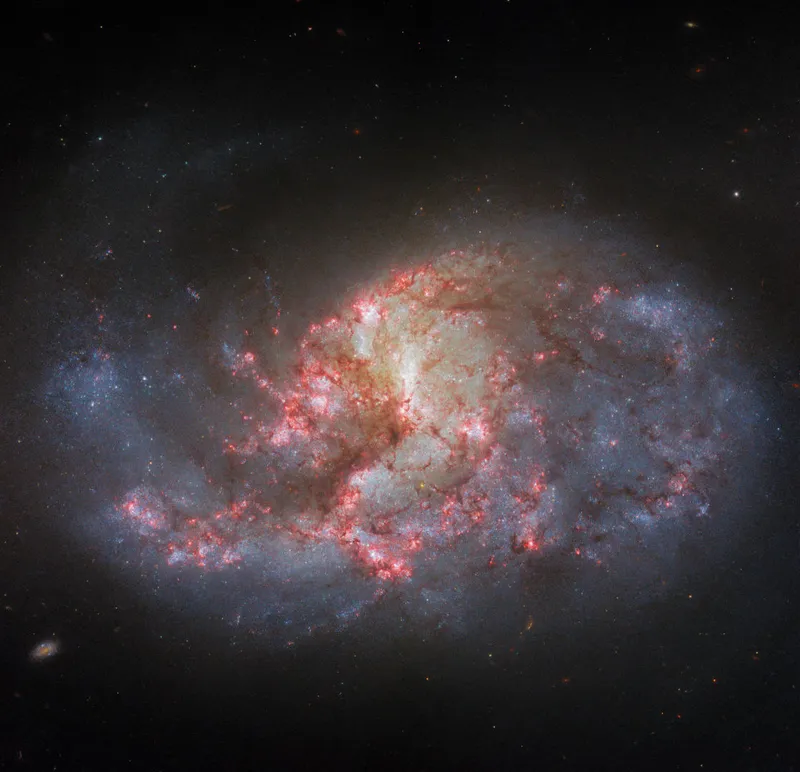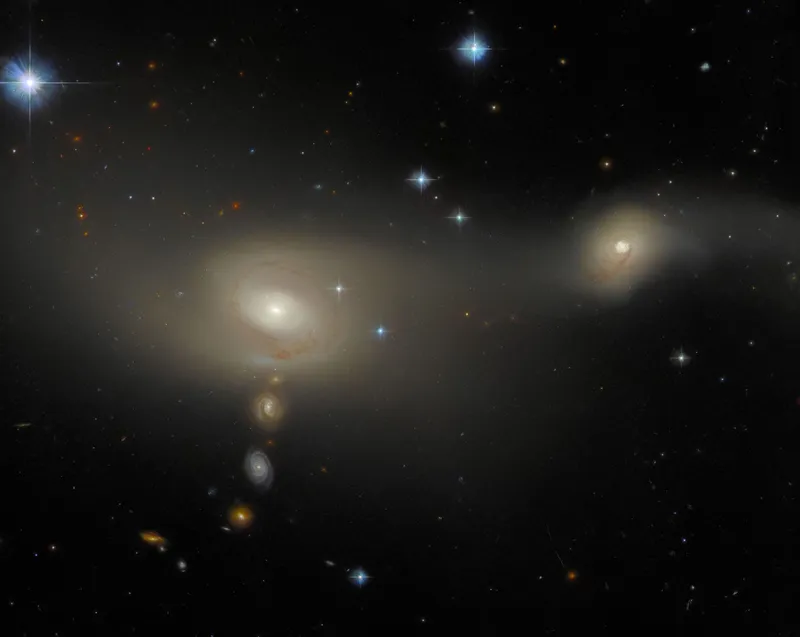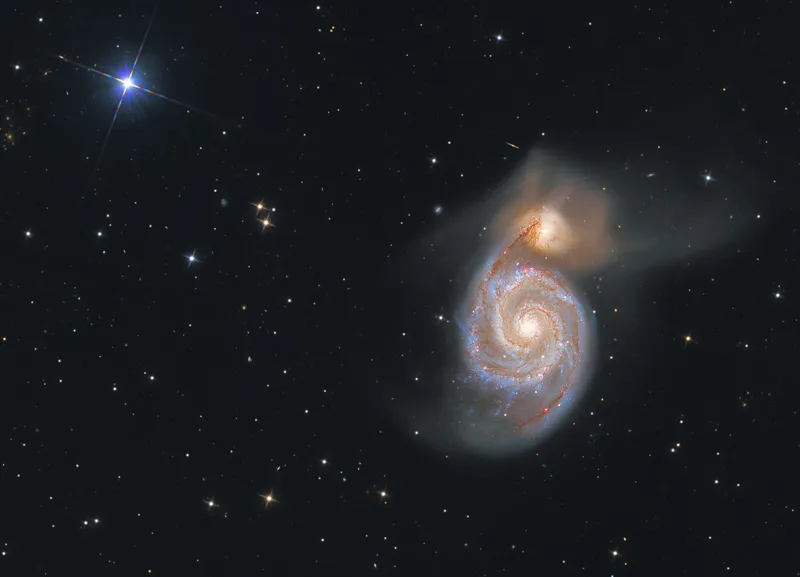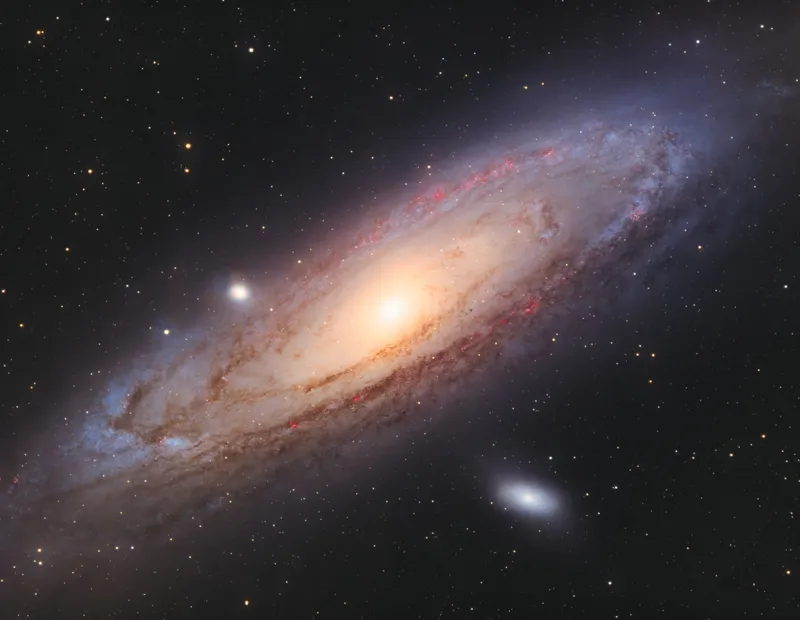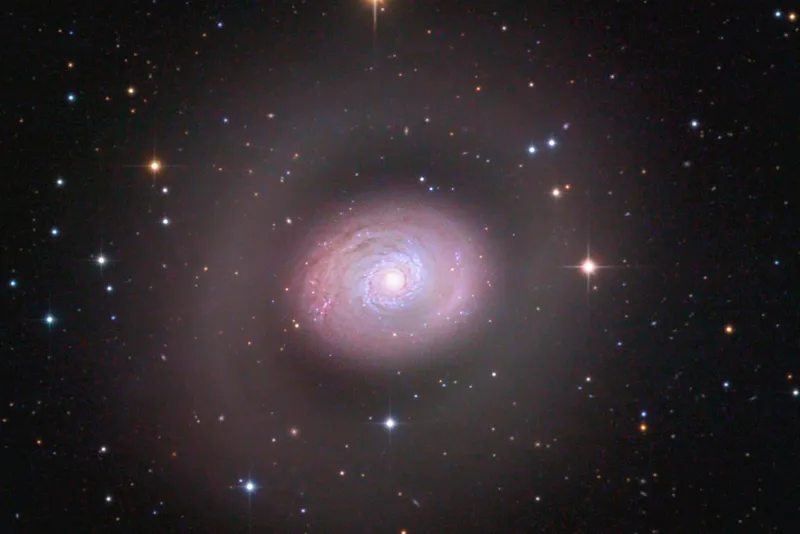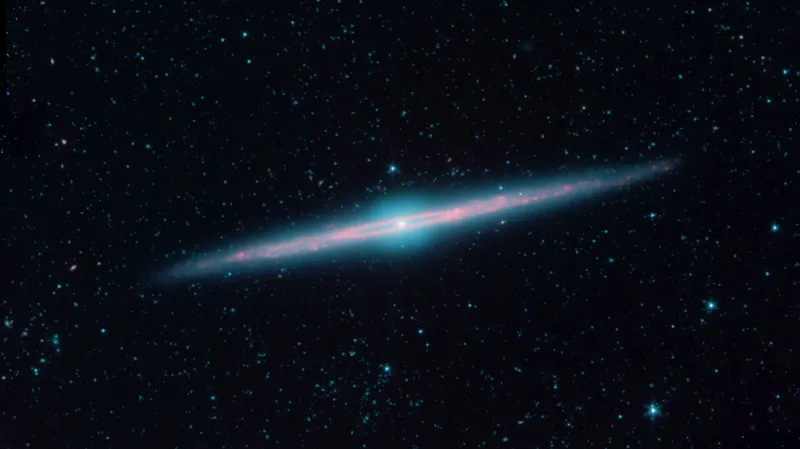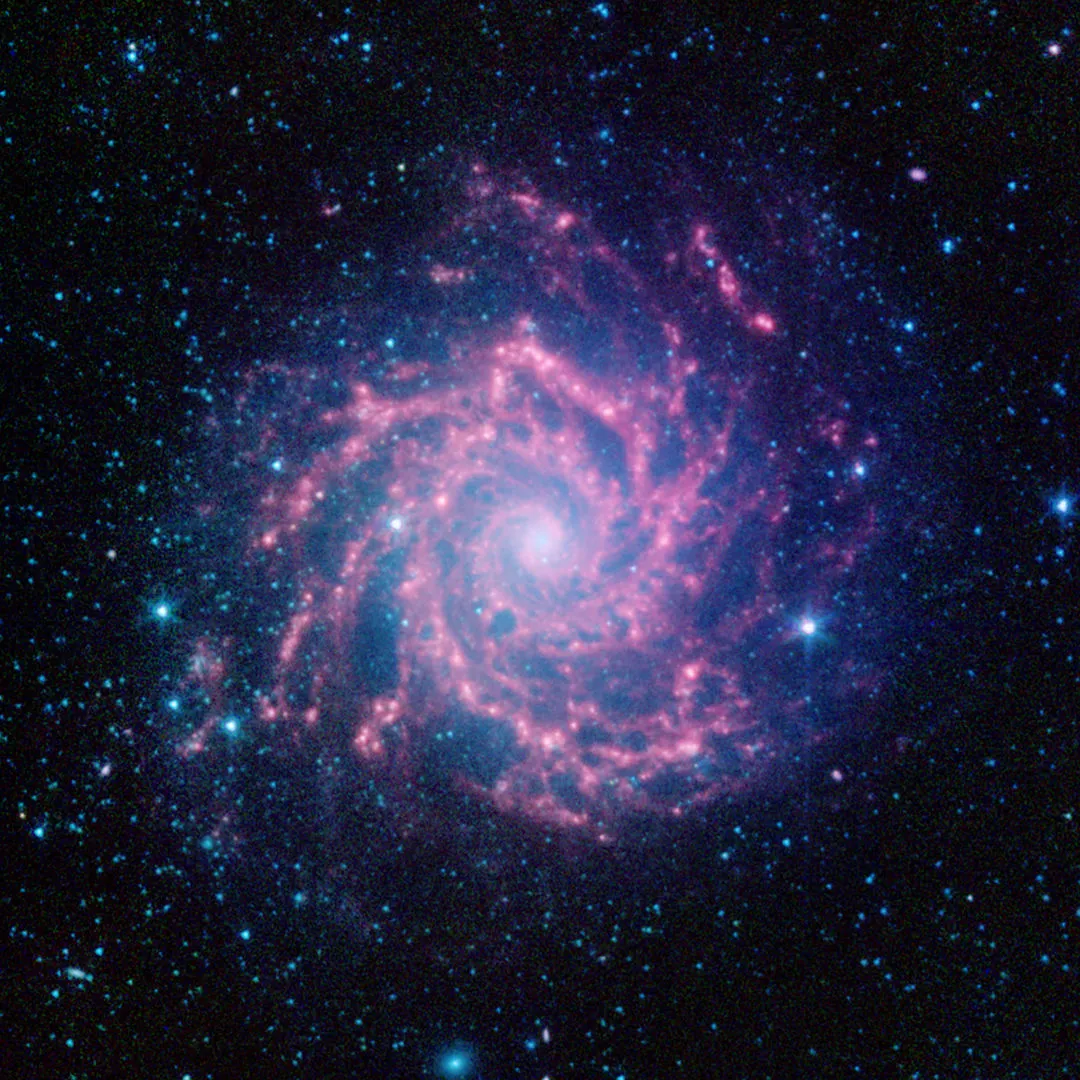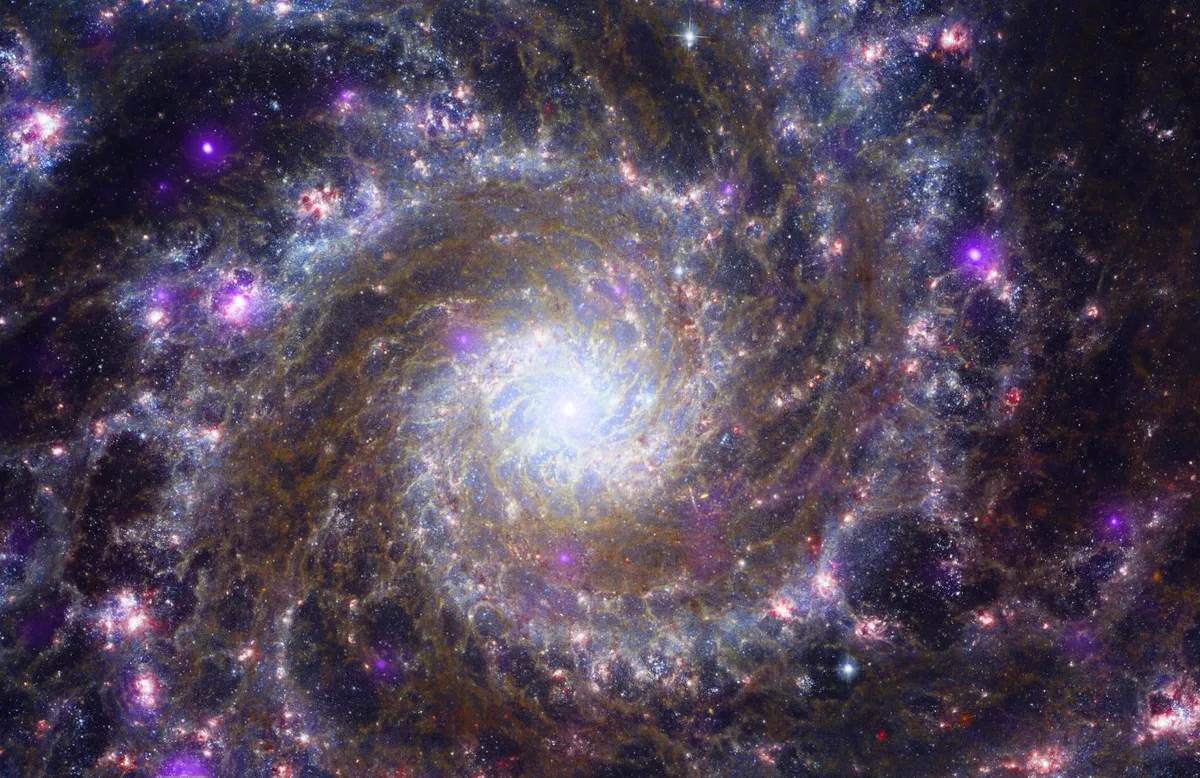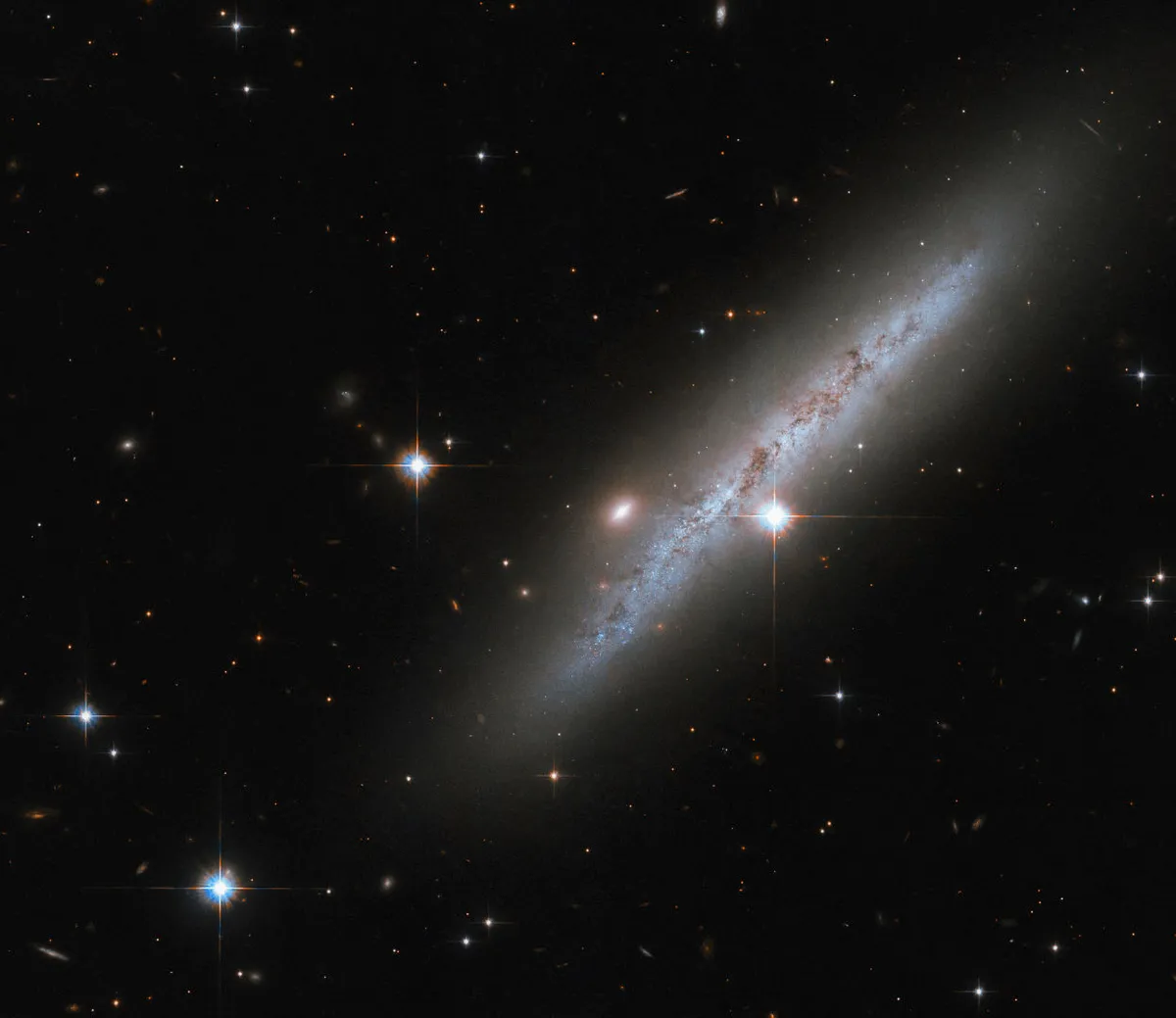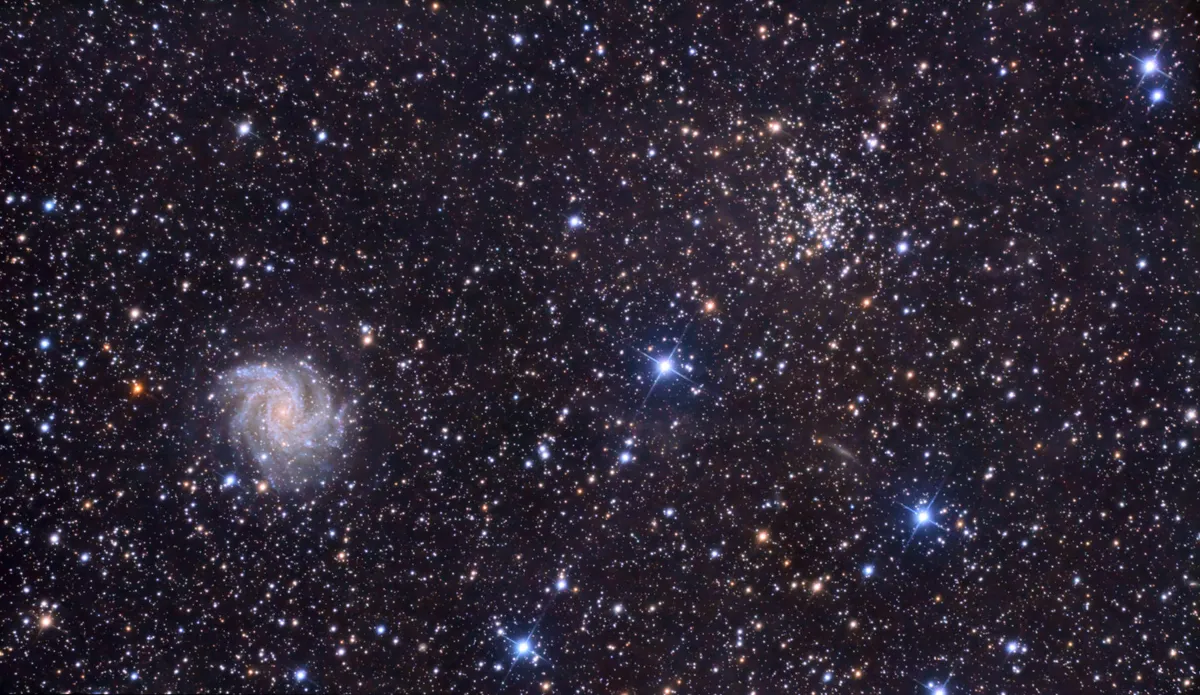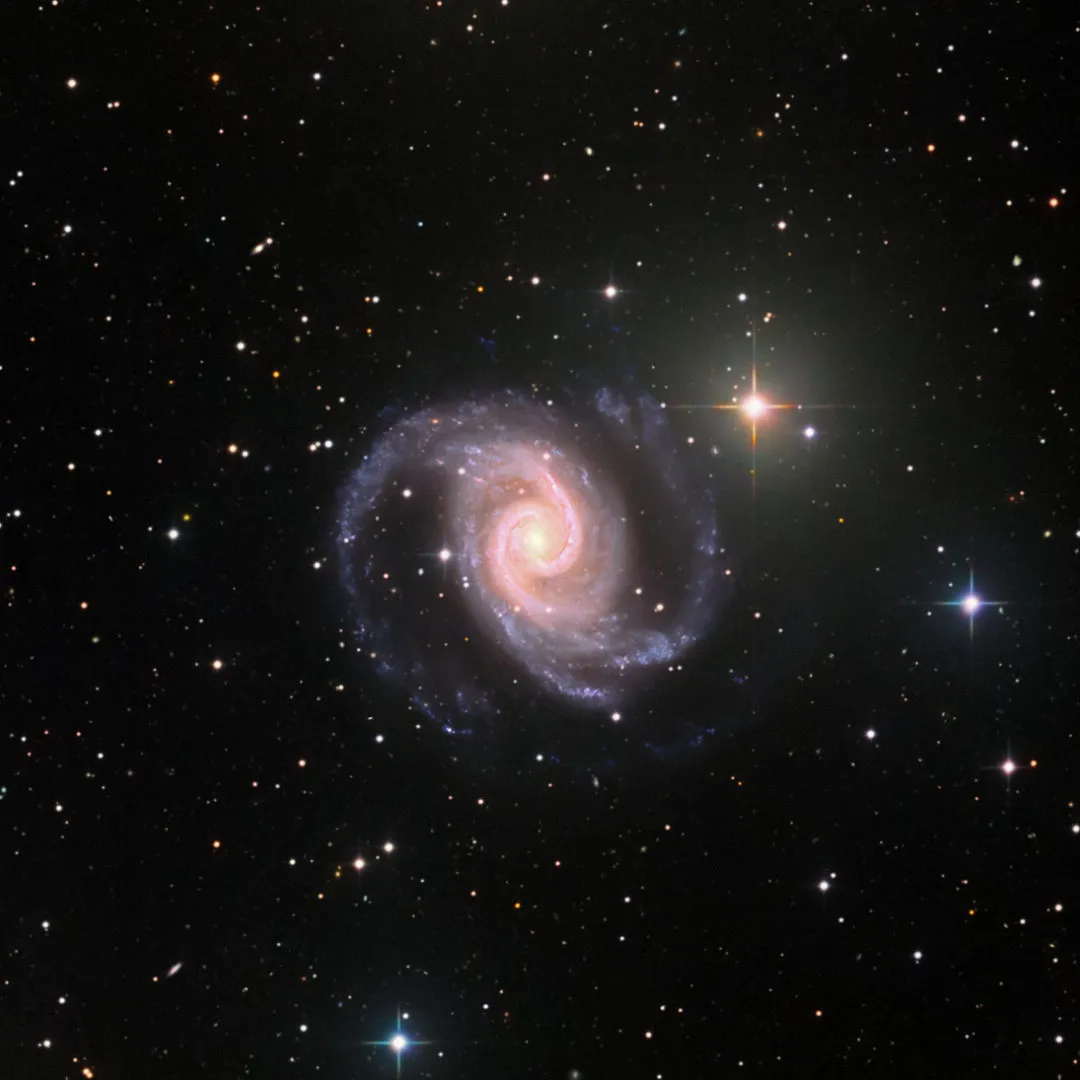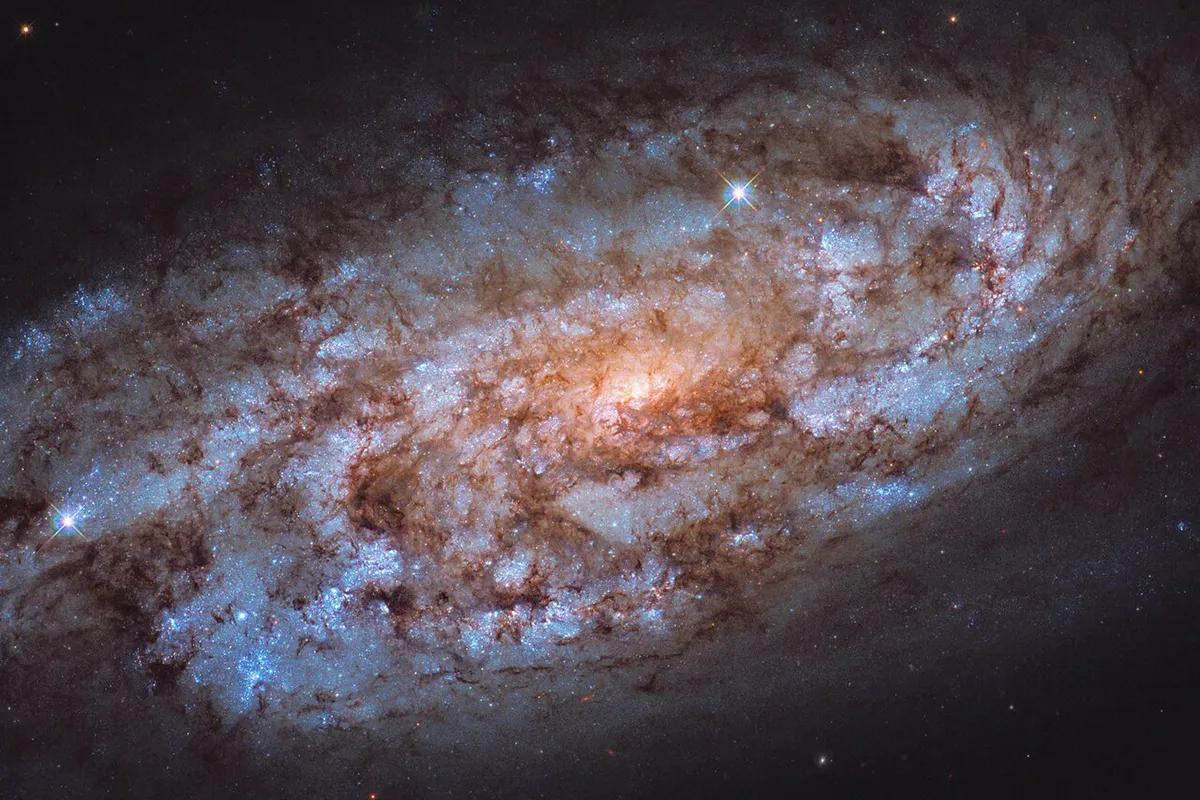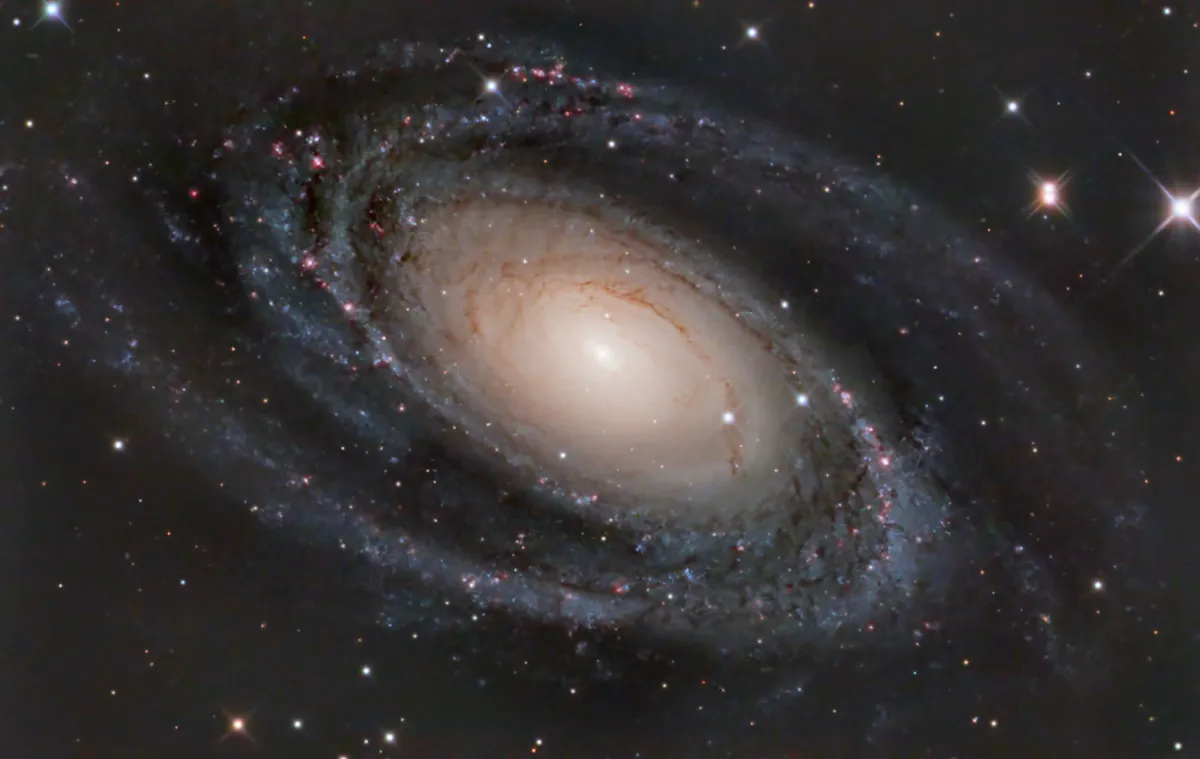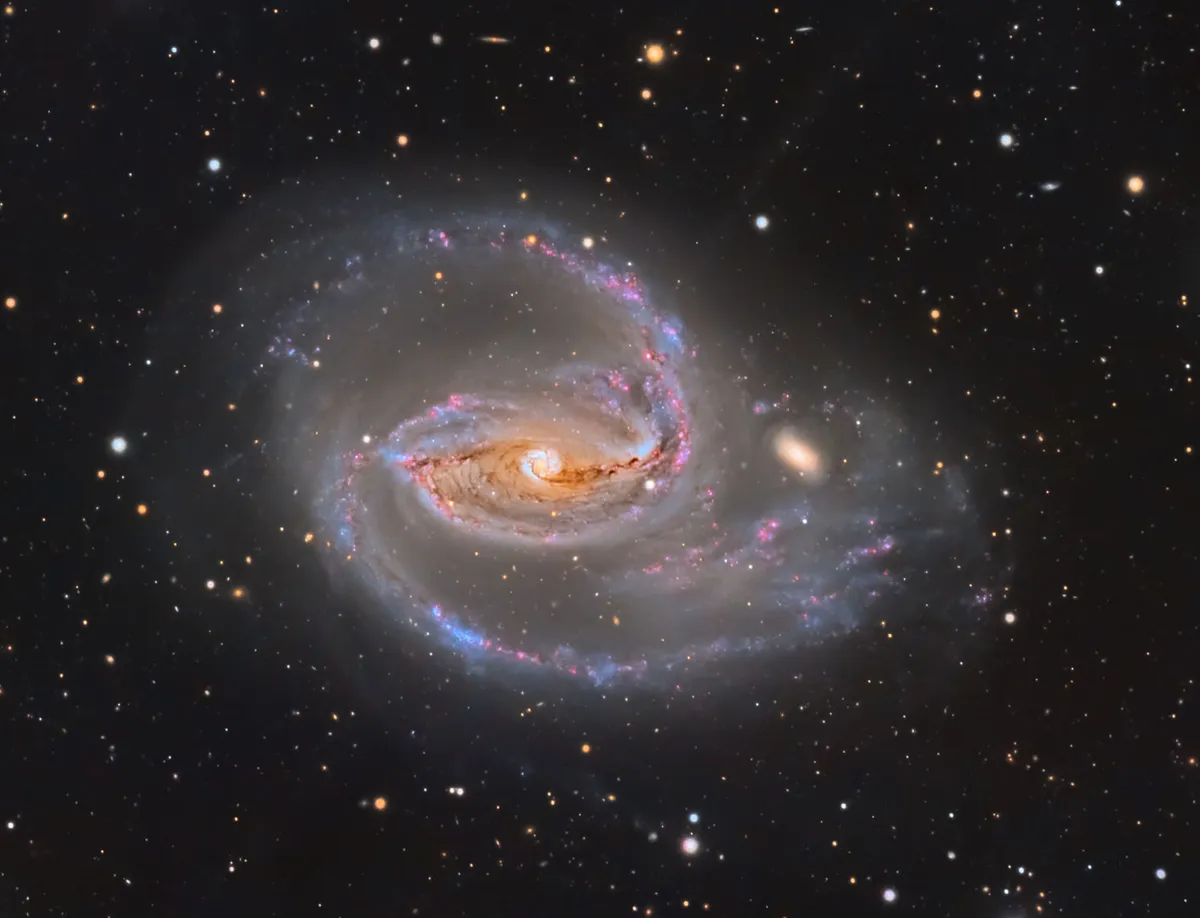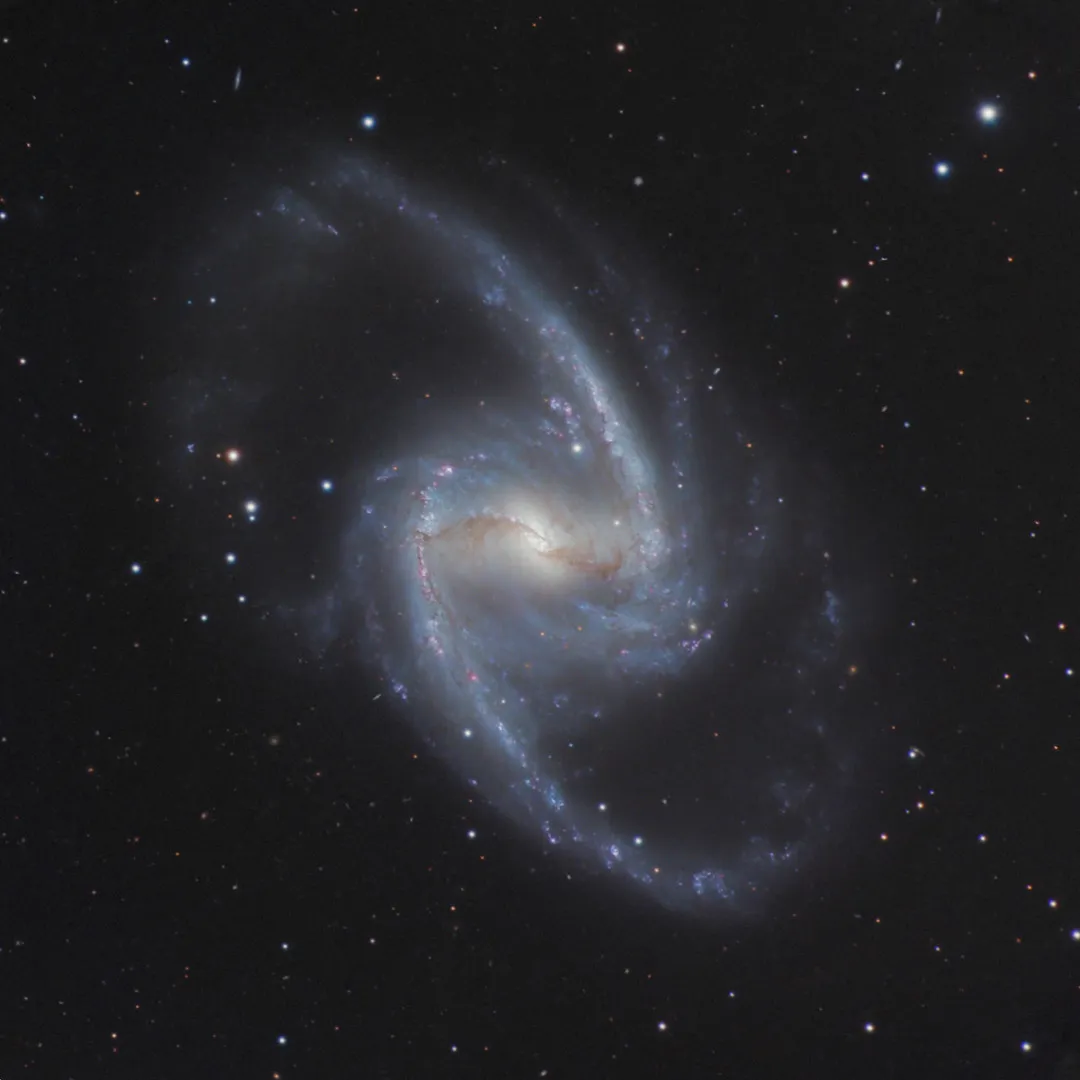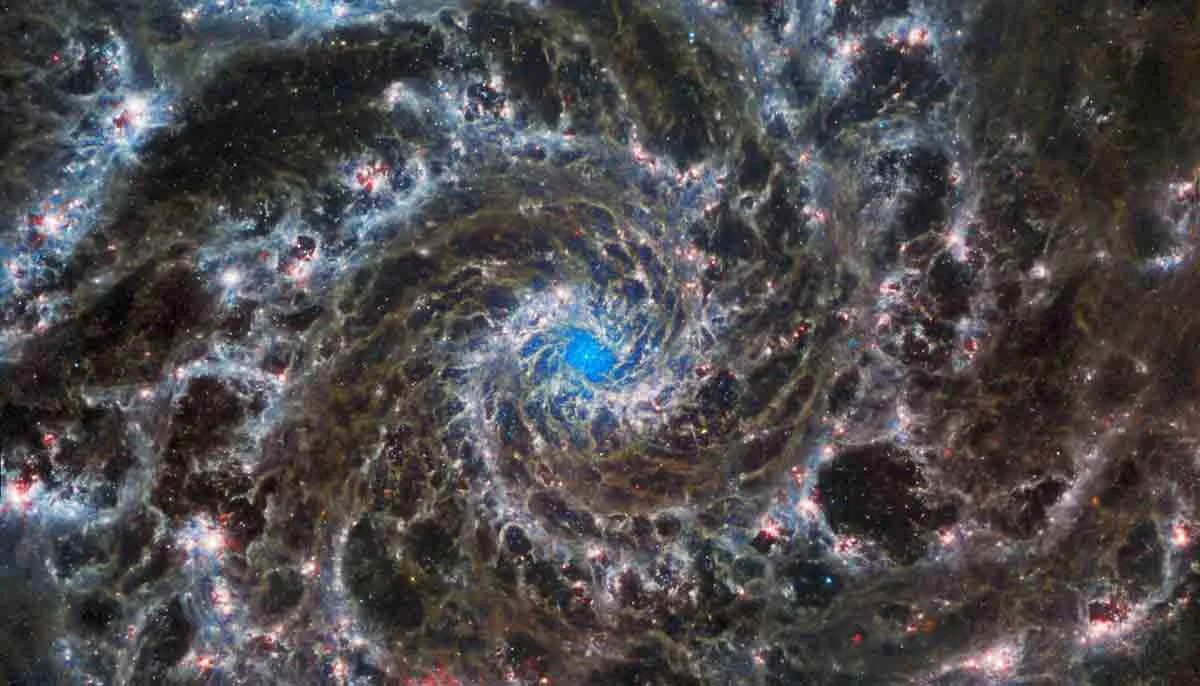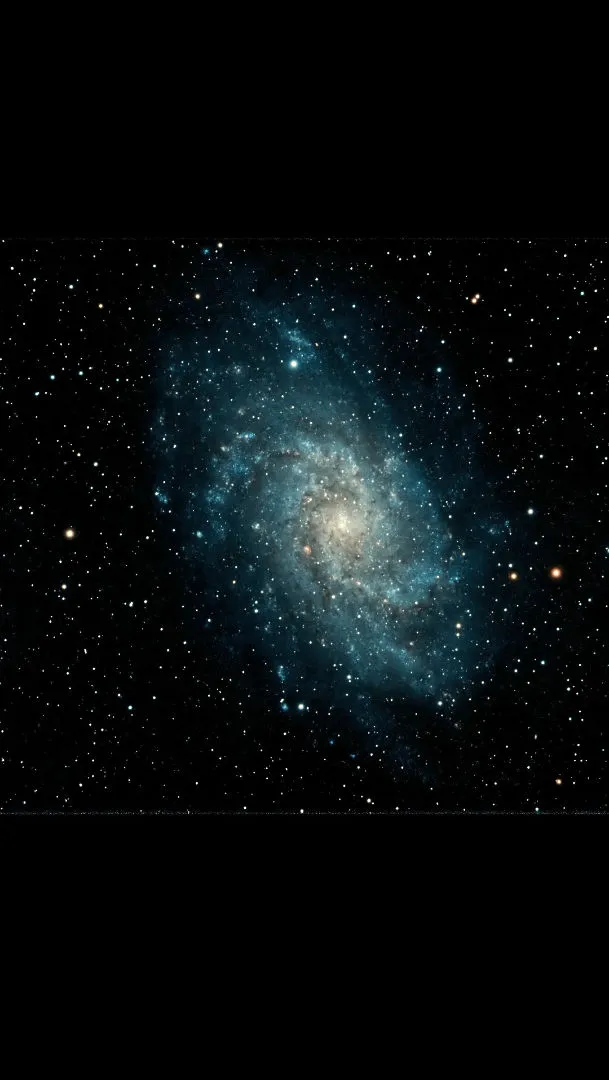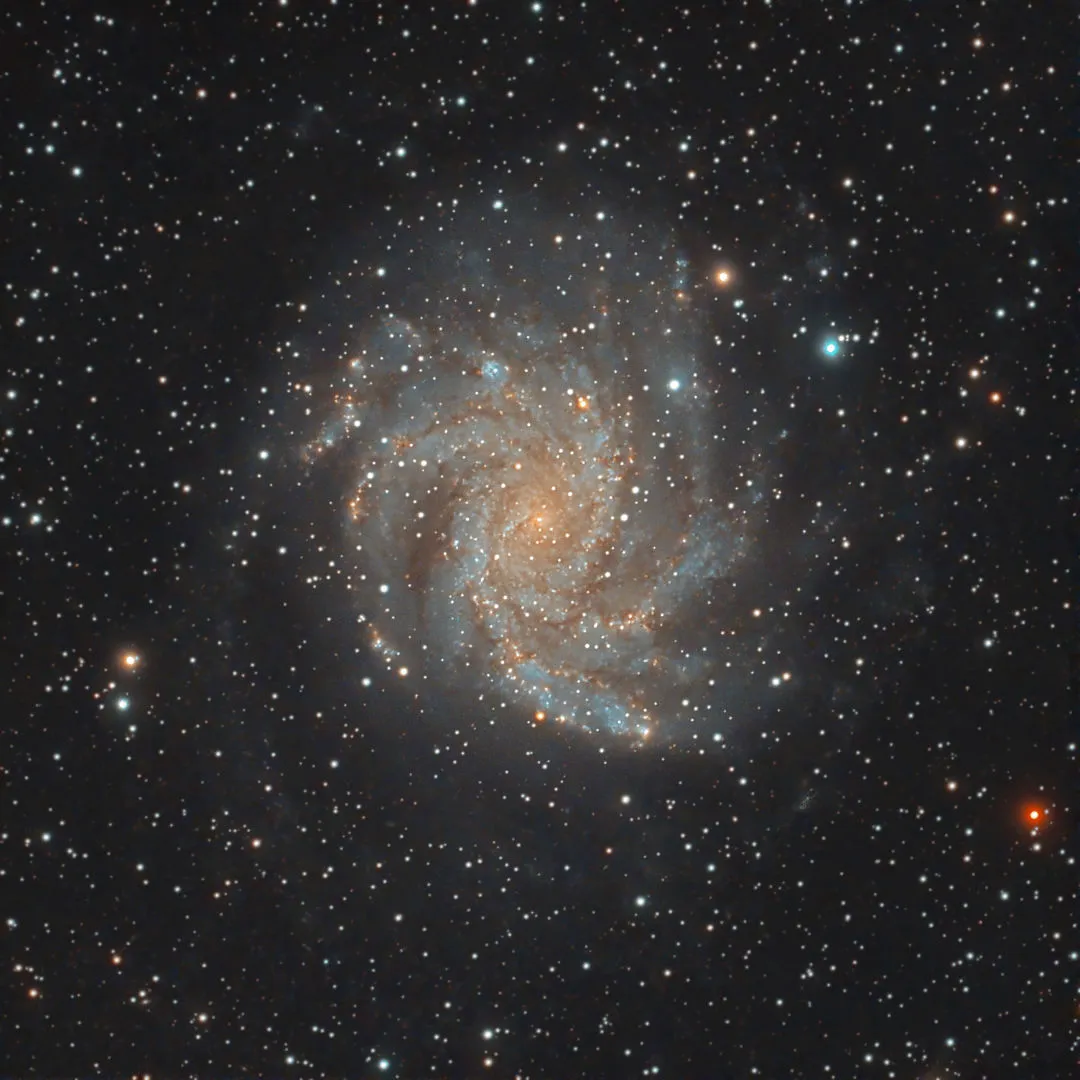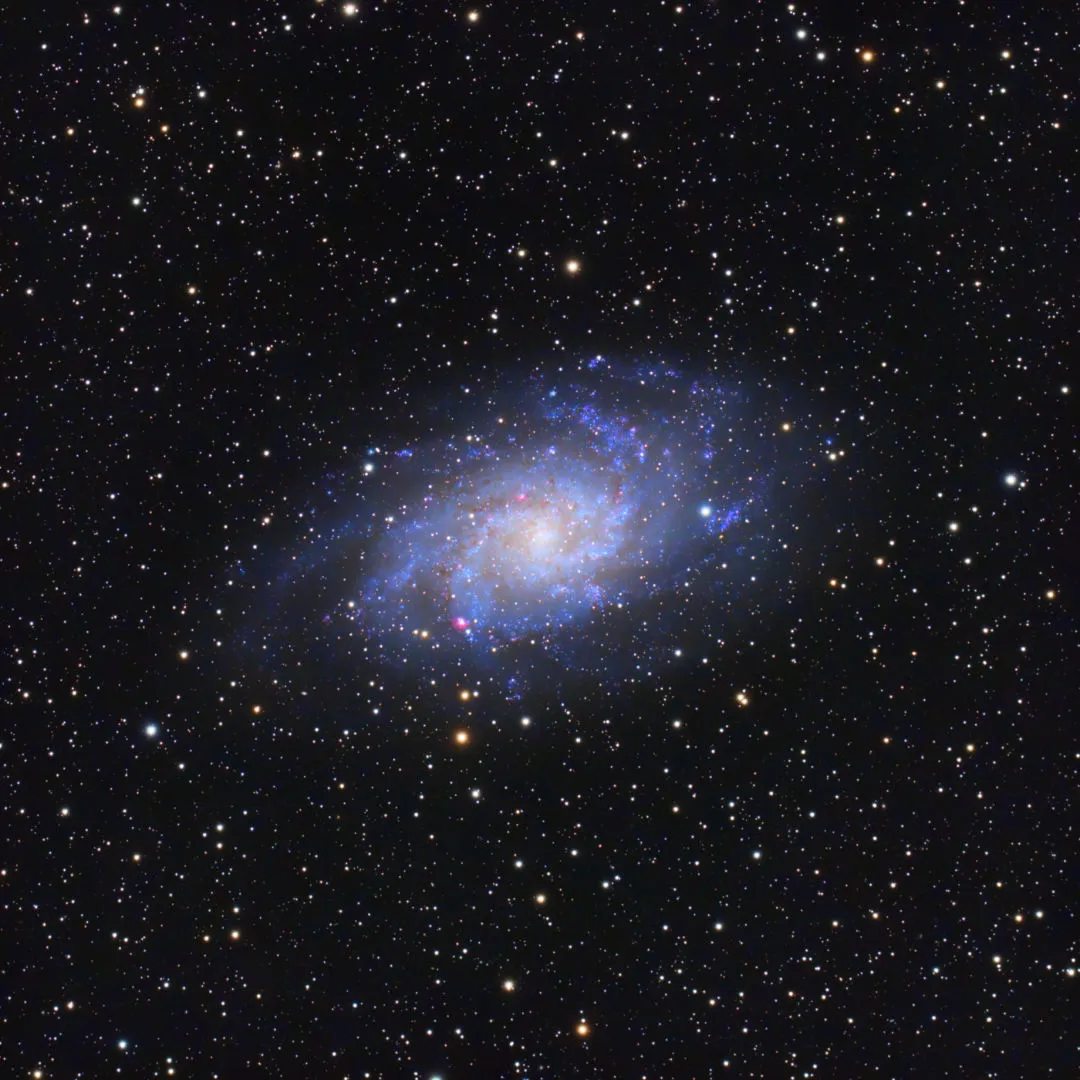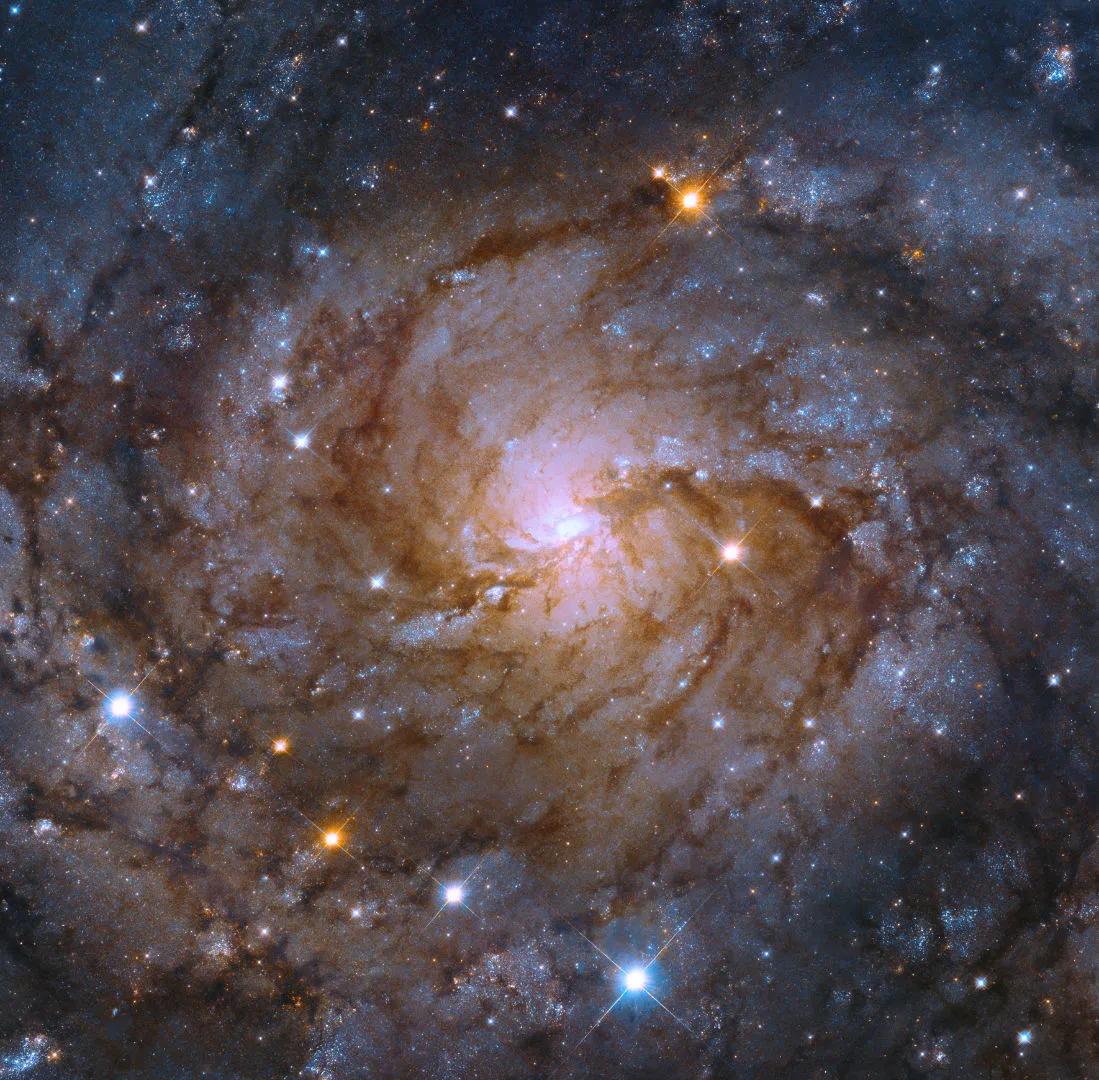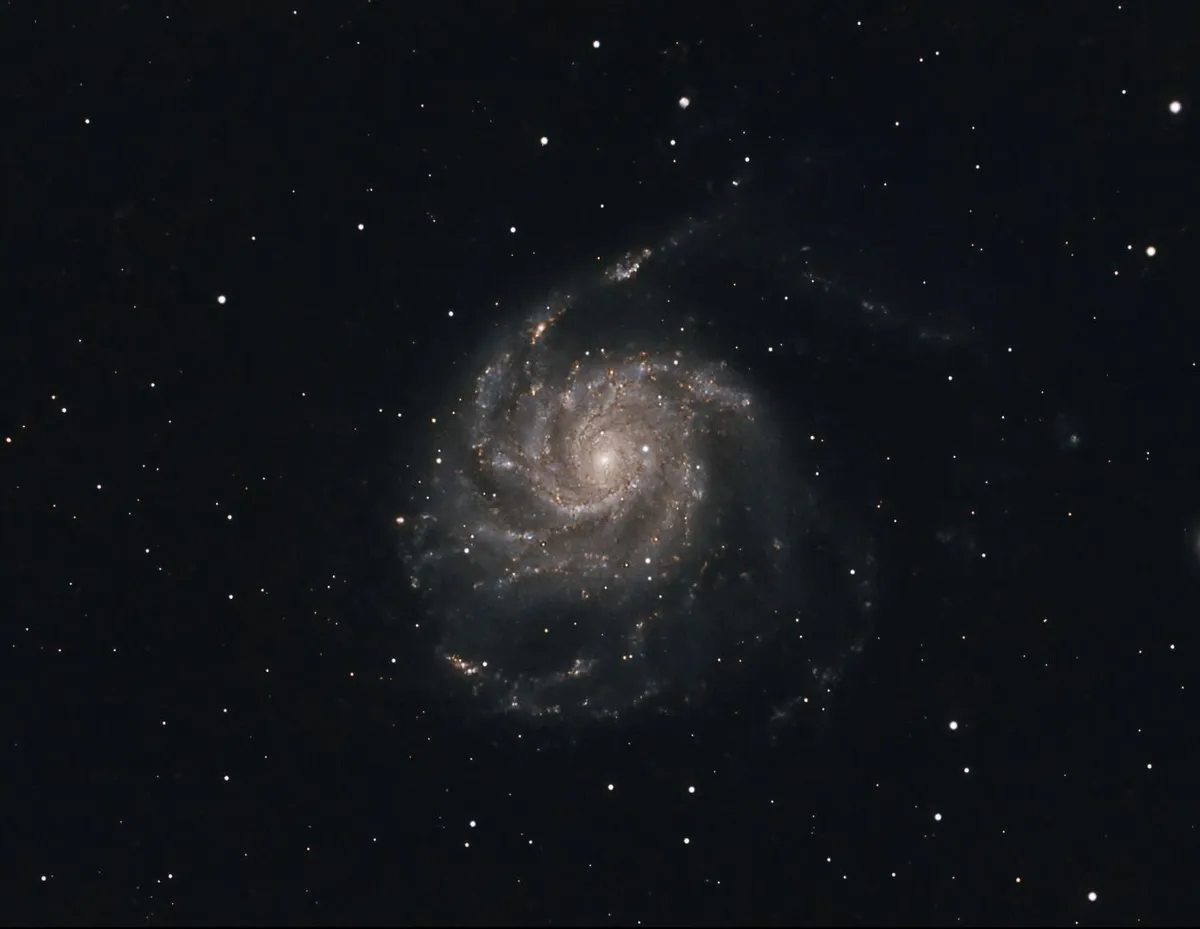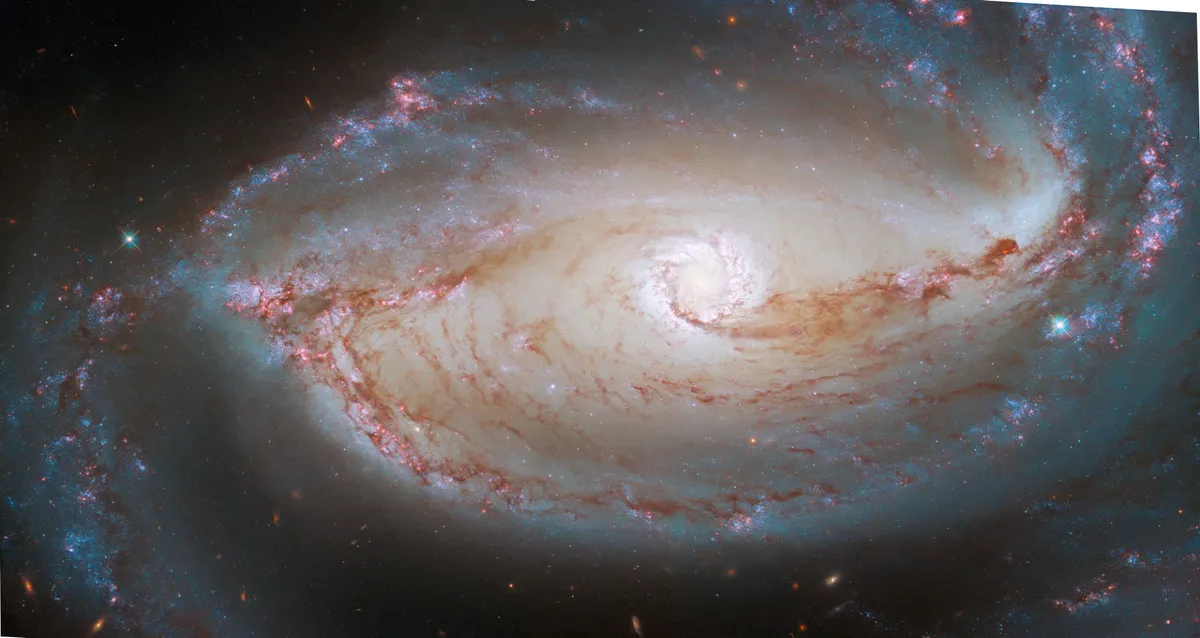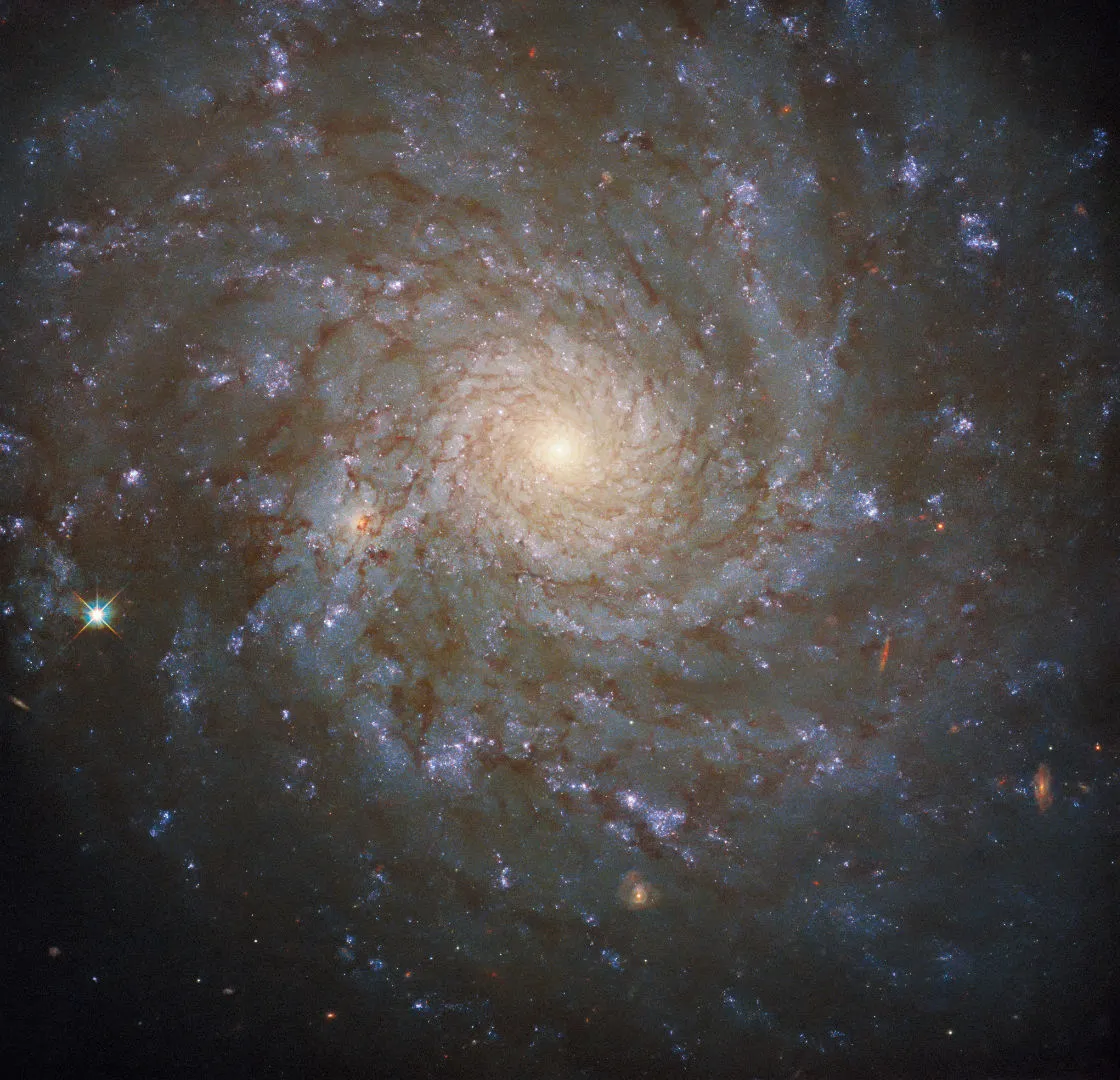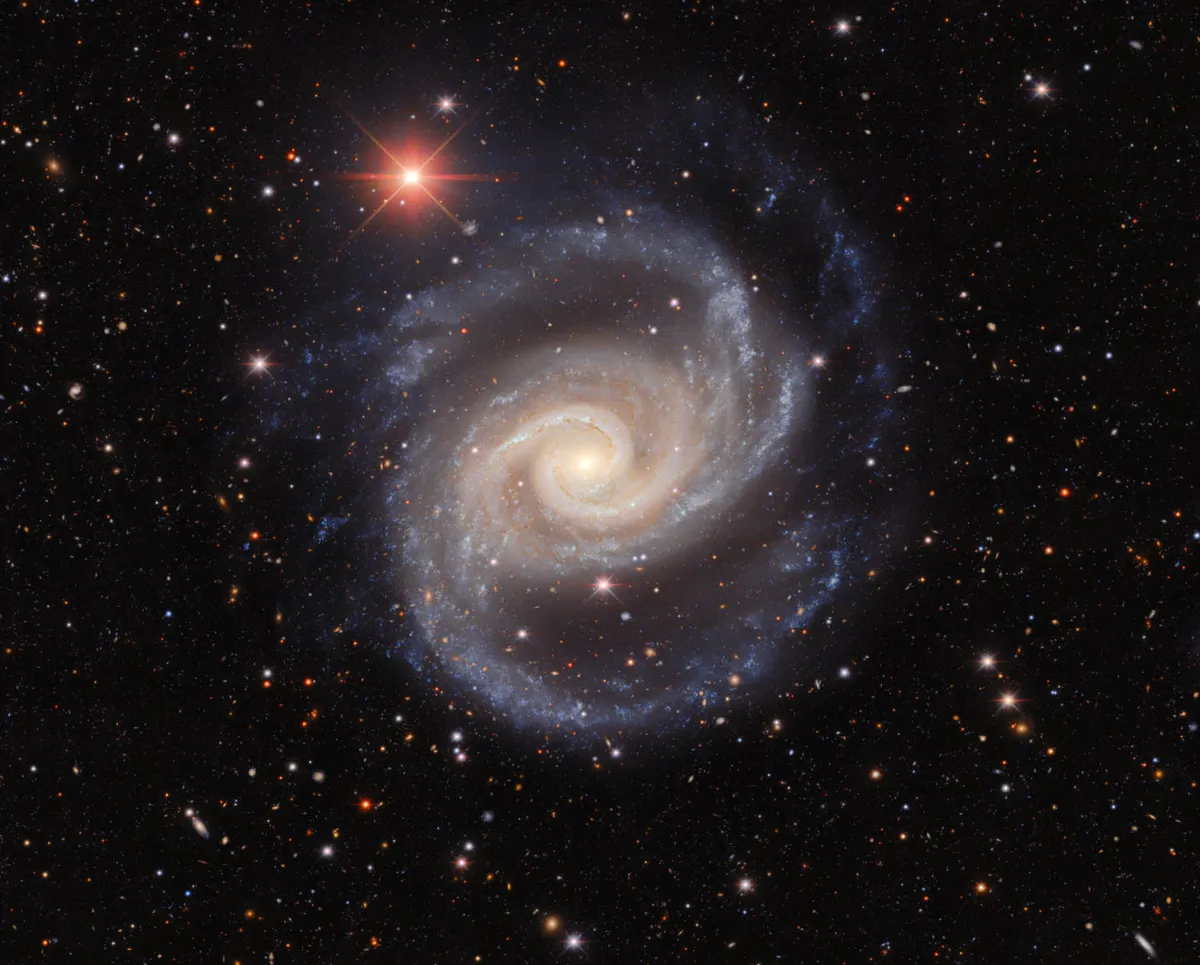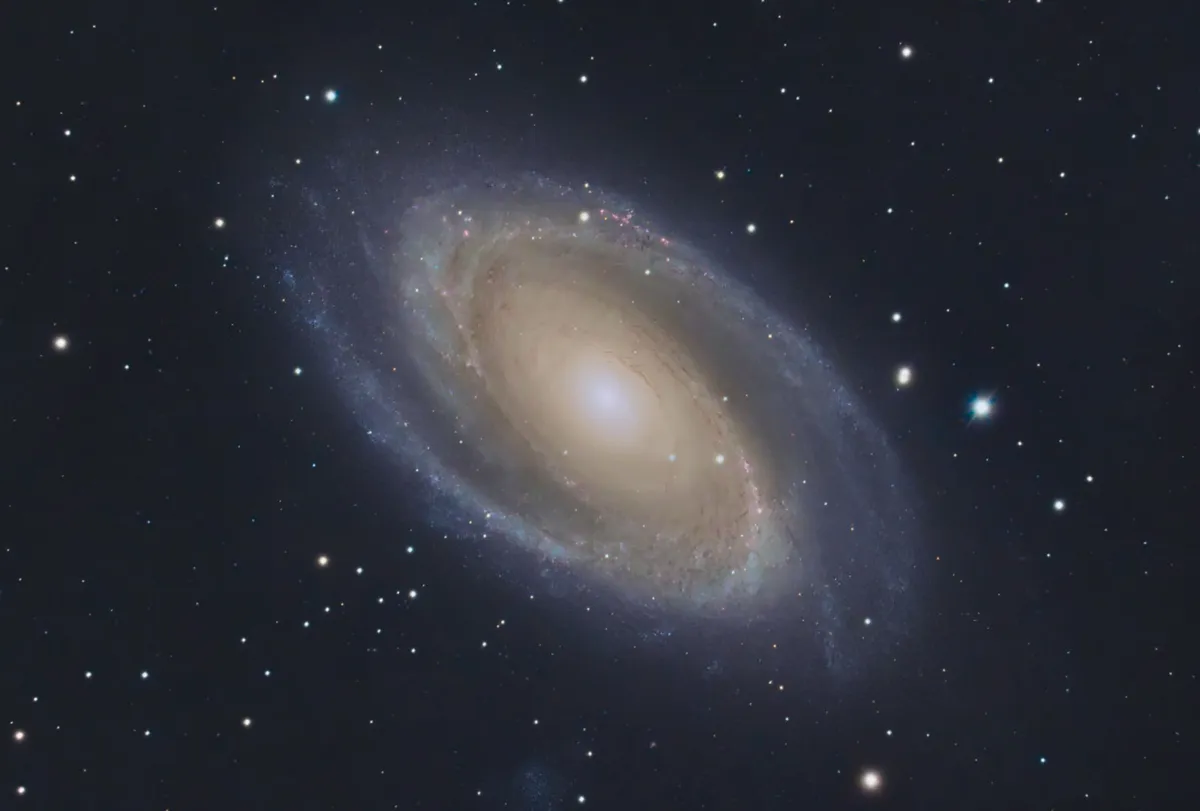A galaxy is a concentration of millions or billions of stars, gas clouds and pockets of dust, all bound by gravity and swathed in a cocoon of mysterious dark matter.
Galaxies are among the largest and most beautiful objects in the night sky. These huge swirling masses are where almost every star in the Universe is born, lives and dies.
See galaxies through your telescope with our guide to best galaxies to observe.
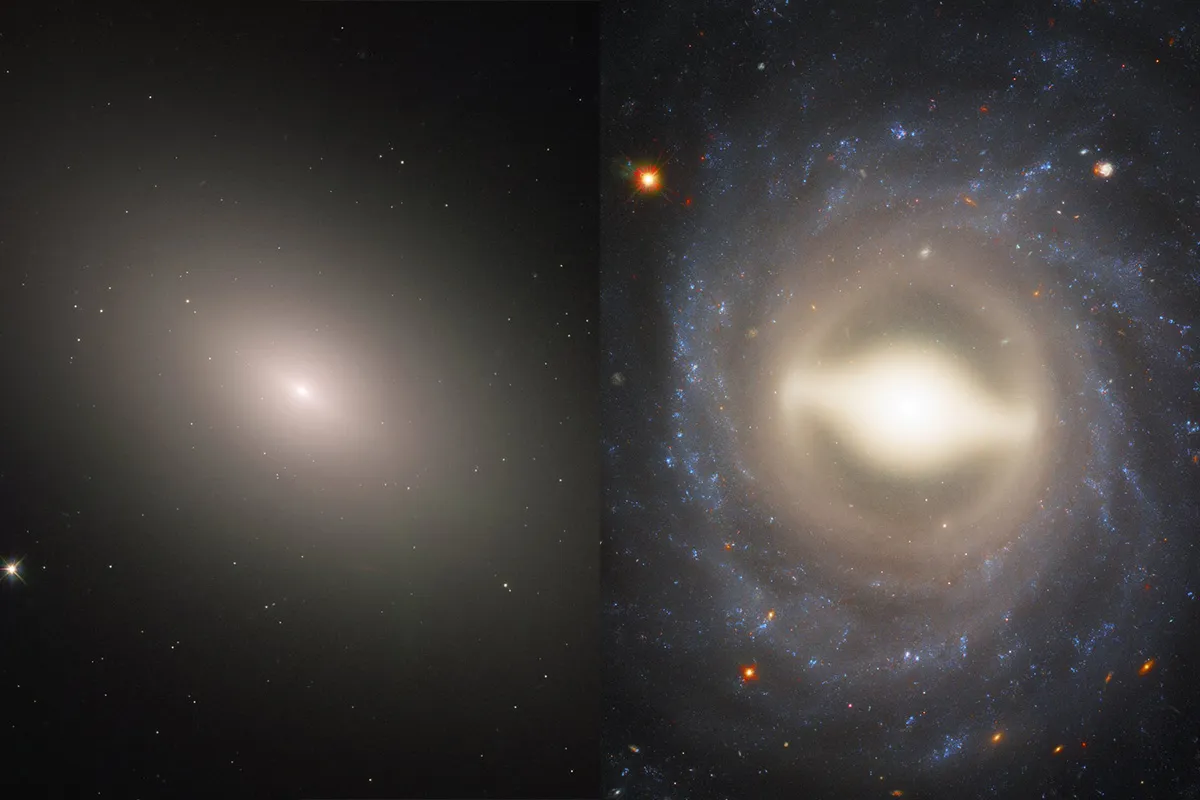
There are probably over 100 billion of galaxies in the Universe and there are at least a hundred billion stars in our own galaxy the Milky Way, ranging from tiny red dwarfs to blue supergiants.
Some of the largest nearby galaxies appear in the night sky as faint smudges of light, and it was only in the early 20th century that astronomer Edwin Hubble proved that they lie well beyond the Milky Way, thus essentially settling astronomy's Great Debate.
Hubble also established that galaxies vary in shape and size.
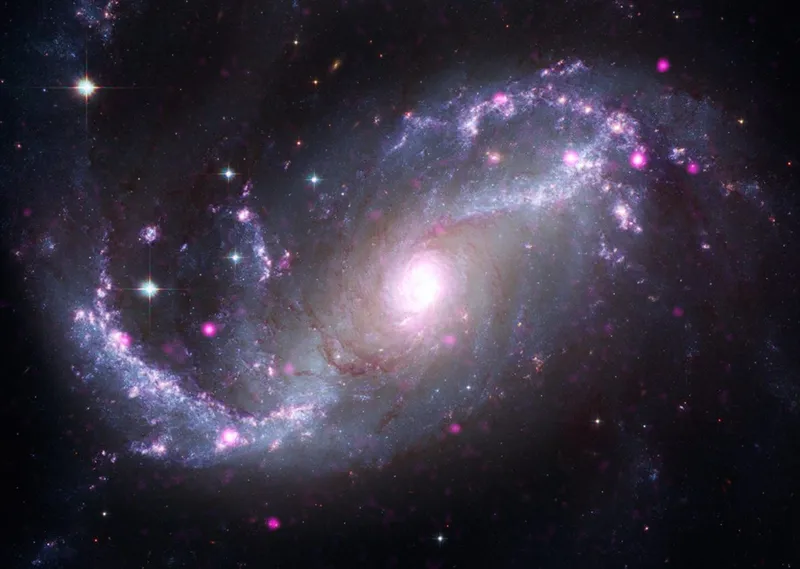
Two-thirds of known galaxies have distinctive spiral patterns, while the rest range from bulbous ellipticals to irregular blobs.
Galaxies can be dwarves containing millions of stars or giants harbouring trillions.
Astronomers are still piecing together why this is the case, but galaxy collisions and mergers seem to be important in determining how a galaxy evolves.
Central supermassive black holes also seem to govern how gas is consumed and when stars are formed within these cosmic conurbations.
Galaxy formation
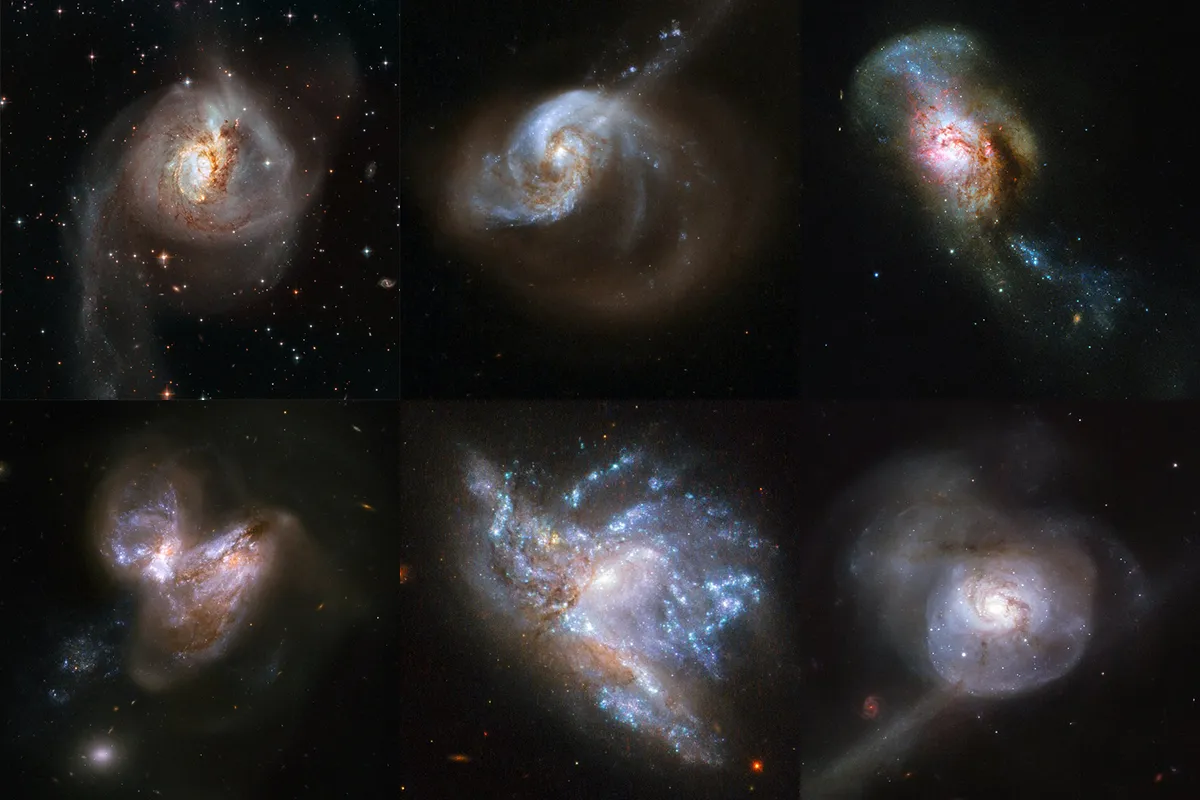
Understanding how galaxies form is inevitably tricky. Many astronomers think that galaxies form by being built up from smaller ones through a series of collisions, in a process known as hierarchical galaxy formation.
Small, gas-rich galaxies in the young Universe crashed together and merged to make bigger ones. Copious stars were produced, using up gas.
Once this gas ran out, elliptical galaxies emerged.
Central black holes also consumed gas, limiting the growth of galactic bulges. Later collisions added stars and occasionally gas, meaning discs could grow further (or be disrupted).
And so the variety of galaxies we see today can be explained. This process accounts for why distant galaxies are bluer and more irregular, and why ellipticals are seen in the most clustered regions.
The web-like distribution of galaxies – with filaments linking groups and clusters – is due to gravity acting on the massive dark matter haloes.
Outstanding puzzles include how the first stars and central black holes formed.
The discovery of galaxies

It has only been in the past 100 years or so that astronomers have understood what galaxies are, and come to realise their importance.
Before then, they were thought to be spiral-shaped nebulae on the outskirts of our own Galaxy, the Milky Way.
To many astronomers they were a nuisance, prone to getting in the way of observations and easy to confuse with comets.
But over the years, interest in these objects grew and so did the controversy about their size. Were they small but nearby, or colossally huge and far away?

On 26 April 1920 two astronomers, Harlow Shapley and Heber Curtis, argued on this topic at what would come to be known as the Great Debate.
Shapley maintained that the Universe consisted of only one galaxy, our own Milky Way, while Curtis said that we lived in just one of many.
In the years that followed, techniques enabling astronomers to measure distance in space enabled Edwin Hubble to measure the distance to the Andromeda Galaxy at 900,000 lightyears (though this number has since been revised up to 2.5 million lightyears).
This placed it far outside the limits of Shapley’s galaxy. This meant that galaxies were huge.
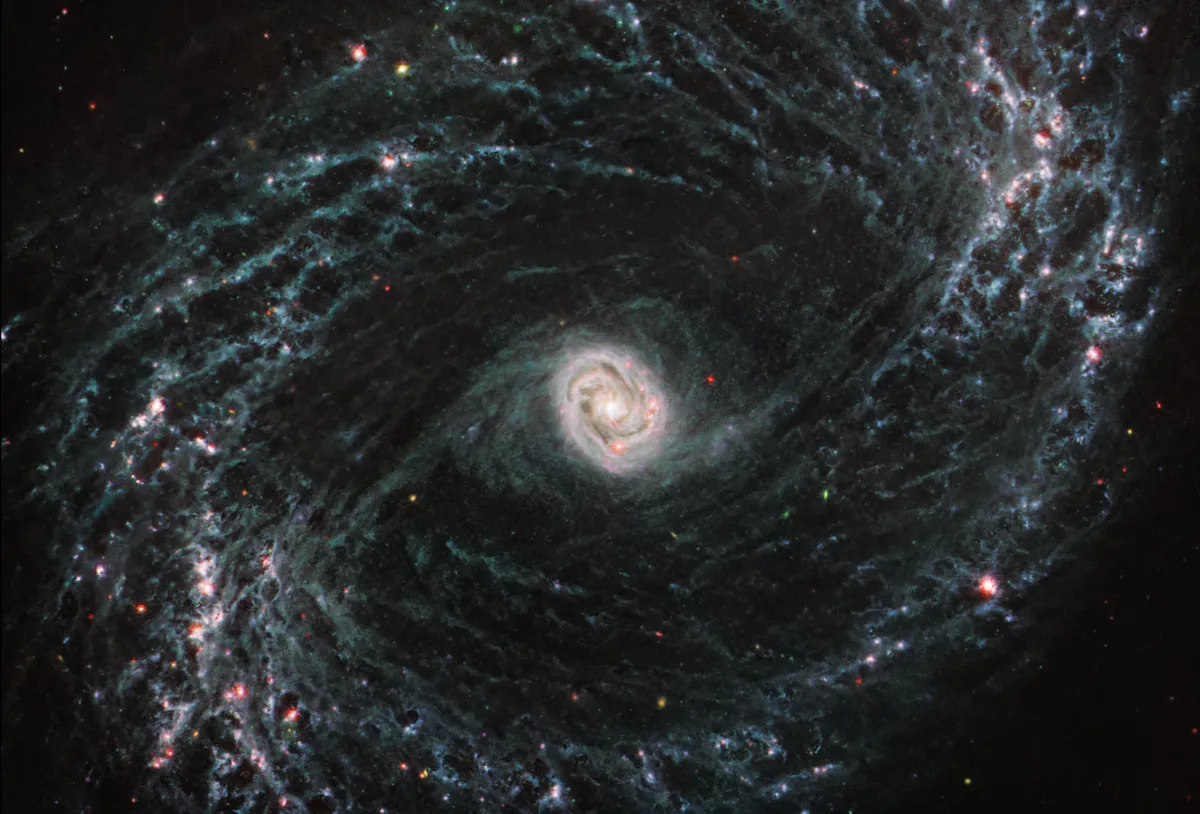
Types of galaxy
Generally speaking, there are three main types of galaxy: elliptical, spiral and irregular, although this is only part of the story.
There are many more kinds of galaxy that don't fit exactly into these tight definitions.
Below we'll take a look at some of the different types of galaxy that exist in the Universe.
Spiral galaxies
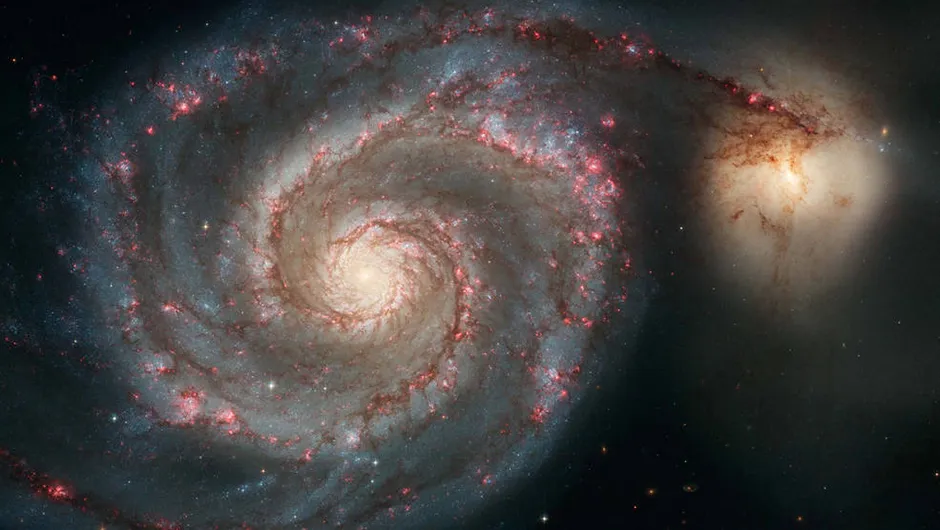
Spiral galaxies such as the Milky Way and the Andromeda Galaxy are named for the arcs of bright stars that corkscrew into their centres.
They are classified according to how tightly wound the arms are – from type Sa to Sc in Hubble’s sequence, or Sba to Sbc if there is a central bar. M74, pictured below , is type Sa.
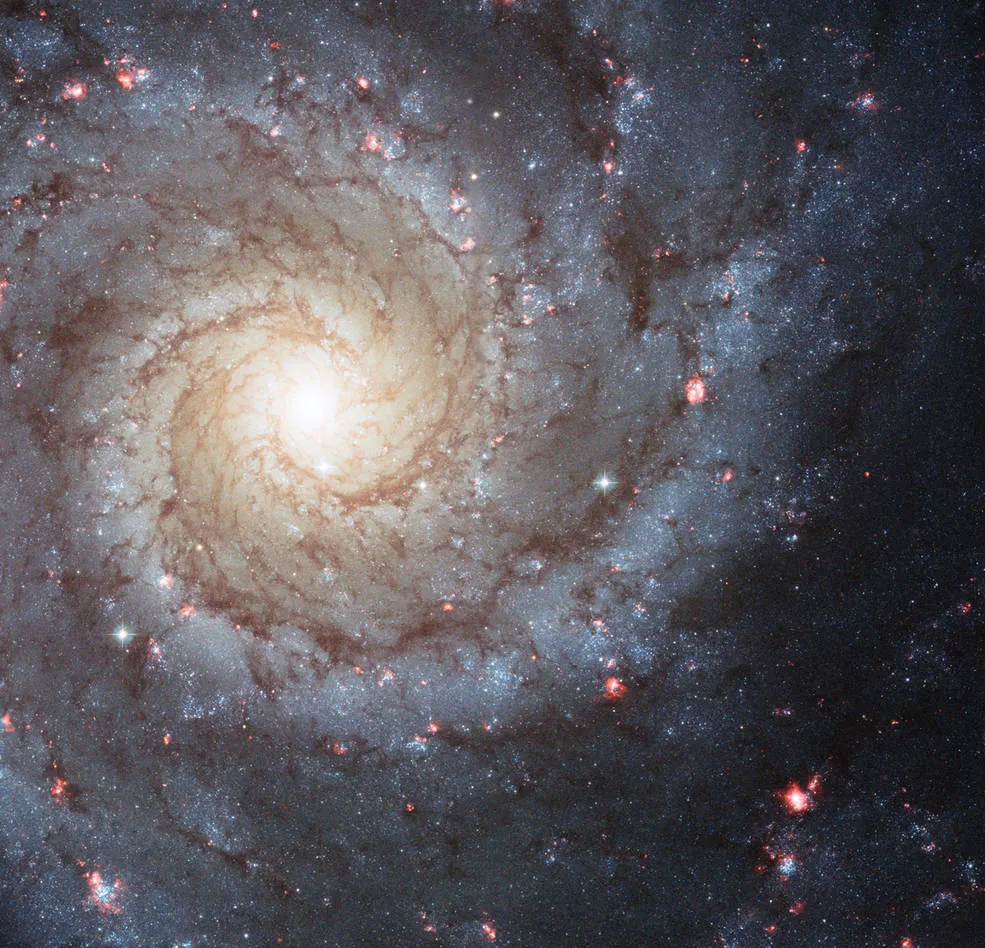
The spiral is a density wave, embedded in a flattened disc of stars and gas that is arranged around a central bulge. Bright stars form where gas clouds are compressed.
The disc is full of young stars and gas, and tends to be blue; the bulge appears redder. Discs form when a cloud of gas collapses under its own gravity, spinning faster as it shrinks vertically.
Spirals are common across space, apart from in the centres of galaxy clusters, where discs are easily destroyed by collisions.
Elliptical galaxies
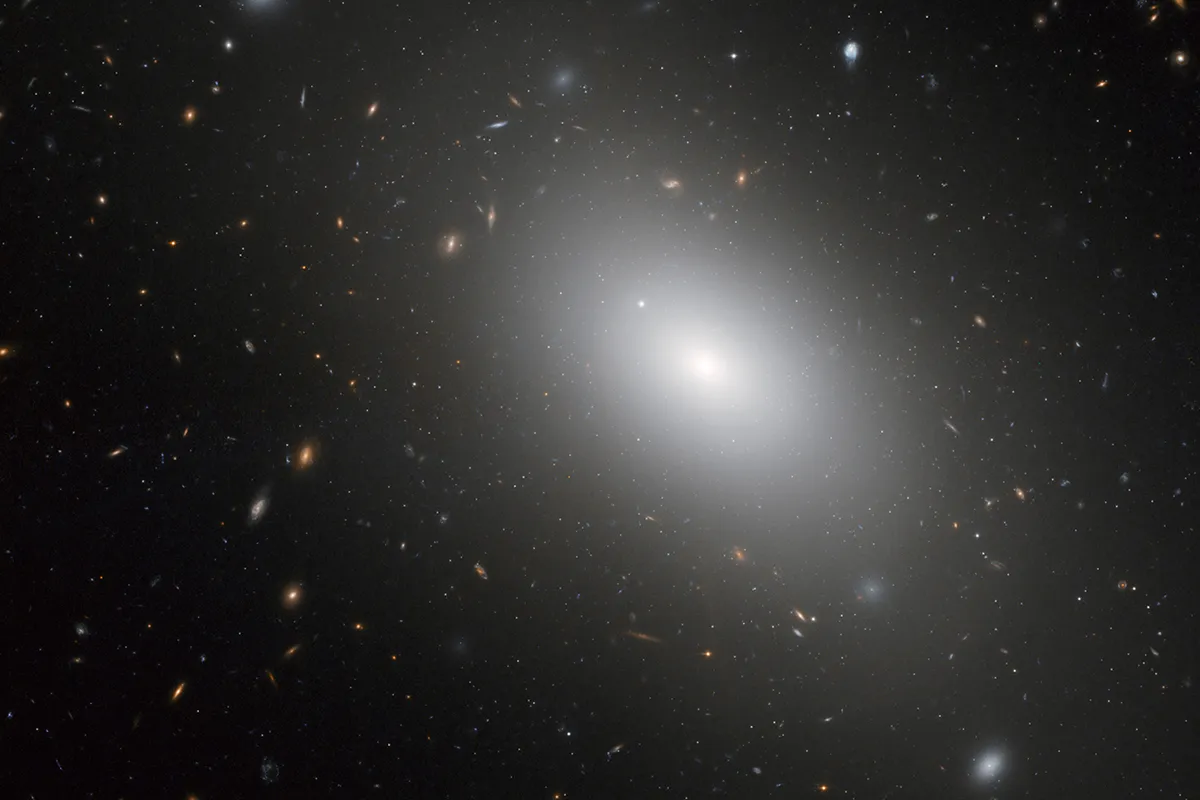
Shaped like rugby balls, elliptical galaxies are much like the bulges of spirals, but lack any disc. They contain little gas, and few stars are being formed within them.
Old, red stars are the norm, travelling about the centre on inclined elliptical orbits.
Elliptical galaxies are often found in groups in the centres of galaxy clusters.
At the heart of many elliptical galaxies lies a black hole, the mass of which typically scales with the galaxy’s size.
Ellipticals are thought to be the result of many collisions between galaxies – resulting in the likes of NGC 1132, above. In each smash up, stars are created until the available gas is used up.
Those stars then age and fade. Star formation may also be curtailed by the central black hole consuming gas.
Irregular galaxies
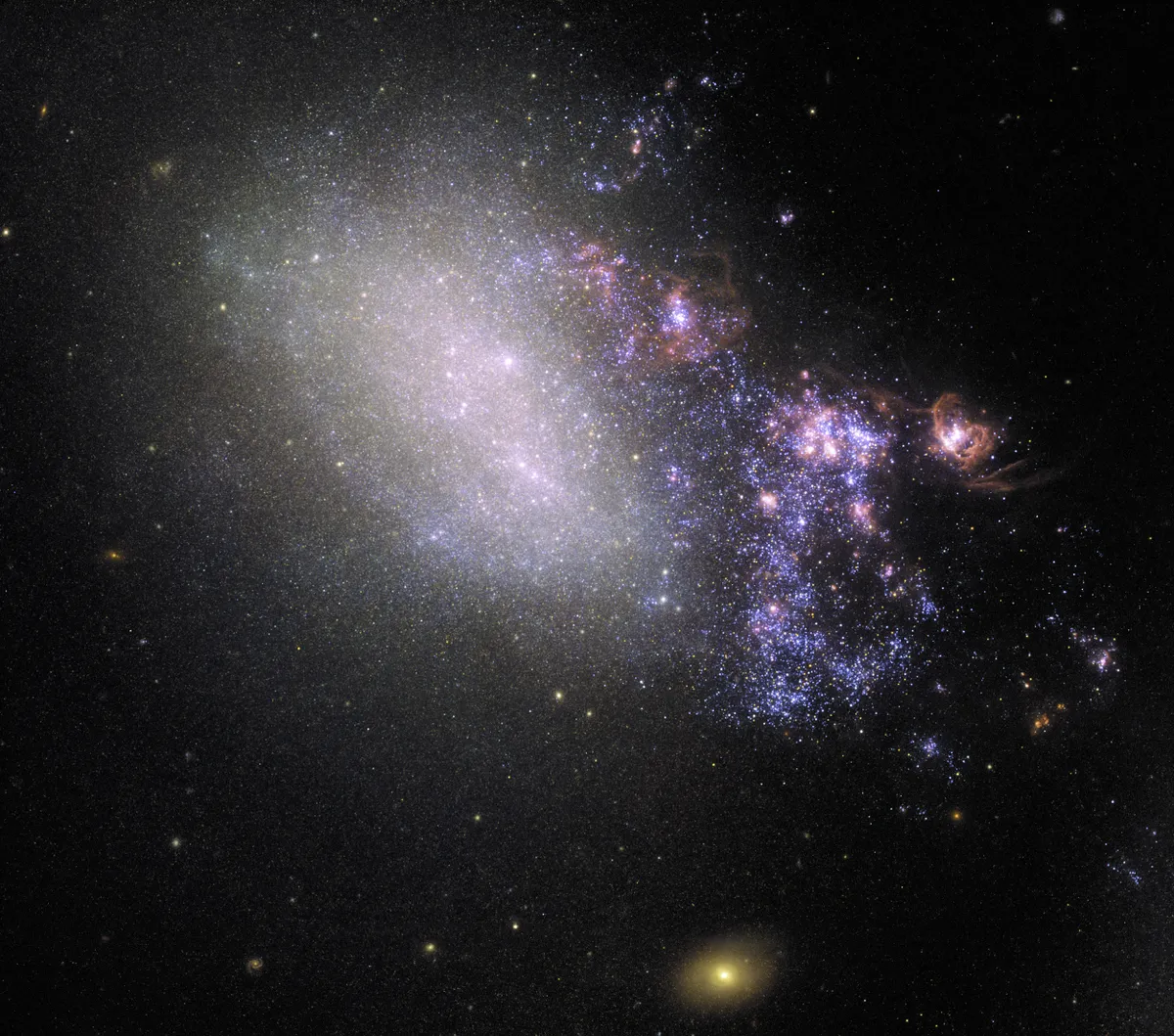
Irregular galaxies do not fall into any of the other main classification categories – they have no distinctive shape.
This may be because they have been distorted in a collision or they may have formed that way.
Some dwarf galaxies condensed in a haphazard manner from gas clouds and haven’t settled into an ordered state.
About a quarter of galaxies are irregular, and they were more common still in the young Universe.
Examples include the Large and Small Magellanic Clouds, two dwarf galaxies near the Milky Way that can be seen easily with the naked eye in the southern night sky.
Lenticular galaxies
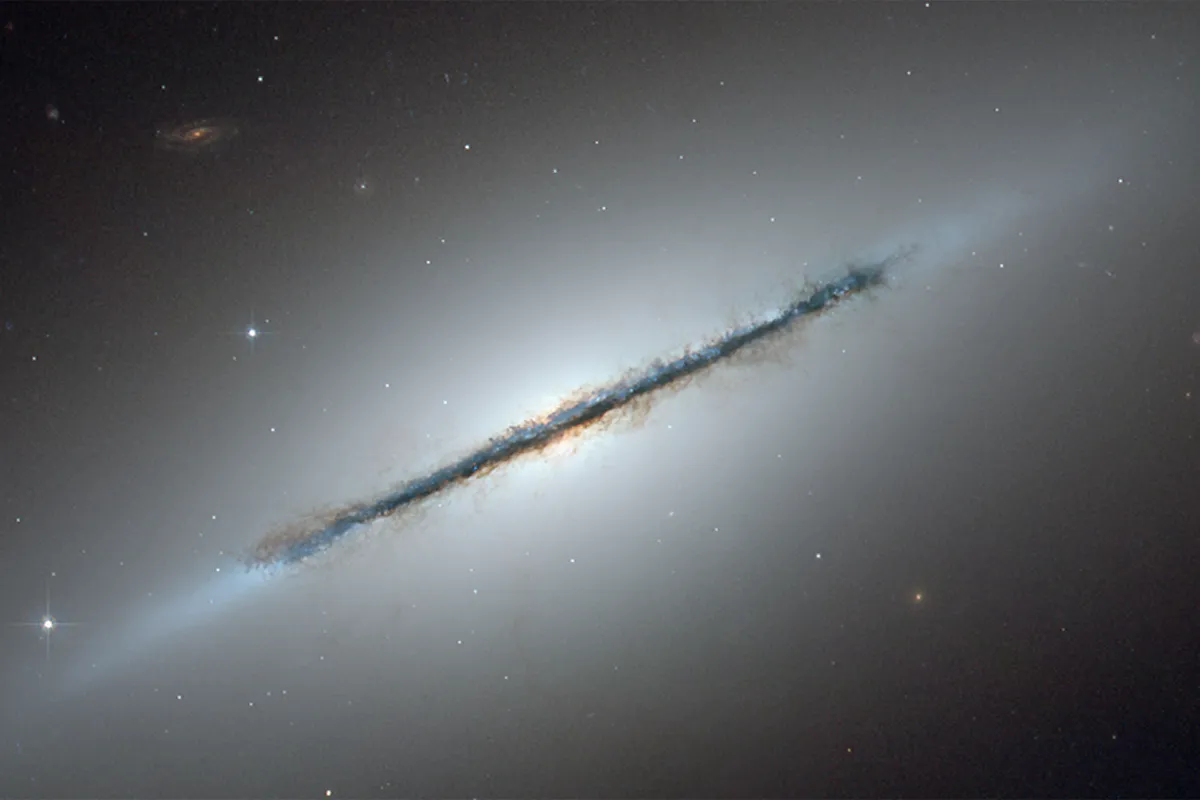
Lenticular galaxies are lens shaped, their classification falling between spirals and ellipticals
Many are similar to spiral galaxies, containing a relatively small disc and large bulge, but lacking the spiral arms.
These may be faded spirals, in which star formation has ceased. Others are likely to be the result of galaxy collisions, which could have ripped off part of a larger disc, or shut down star formation after a vigorous burst.
Examples of lenticular galaxies include the stunning NGC 5866 in Draco, below, and M84 and M86, two bright galaxies lying near the centre of the vast Virgo Cluster.
Interacting galaxies
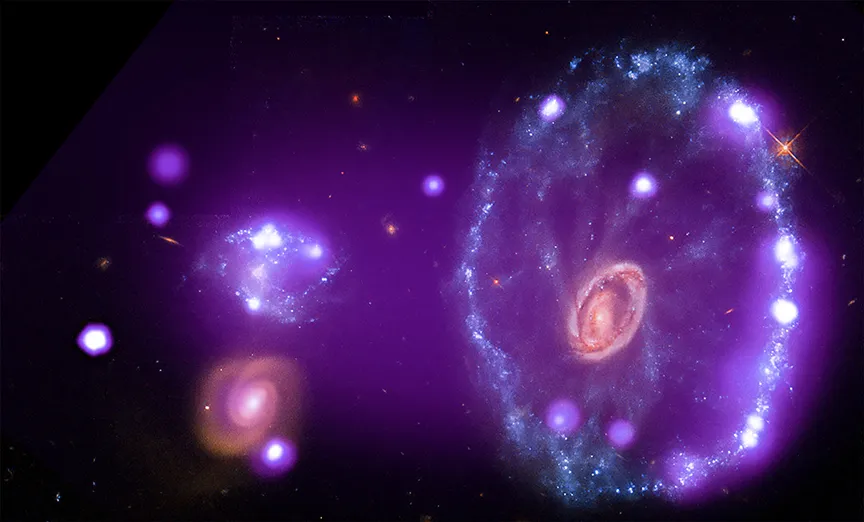
Although galaxies are usually far apart, sometimes they collide – with spectacular effect. A small galaxy can punch a hole as it passes through a larger one, as happened with the Cartwheel Galaxy in Sculptor (above).
Long tails of stars and gas are often thrust out when one galaxy grazes another, giving each a tadpole-like look.
Powerful collisions can rip the hearts of galaxies apart, while the resulting shockwaves can trigger the birth of millions of stars.
When a galaxy is captured by another’s gravity, they eventually merge, altering the character of the whole.
Strands of stars from cannibalised dwarf galaxies can still be seen within the Milky Way. It’s thought that collisions are key to how galaxies grow, and what they look like.
Unusually-shaped galaxies
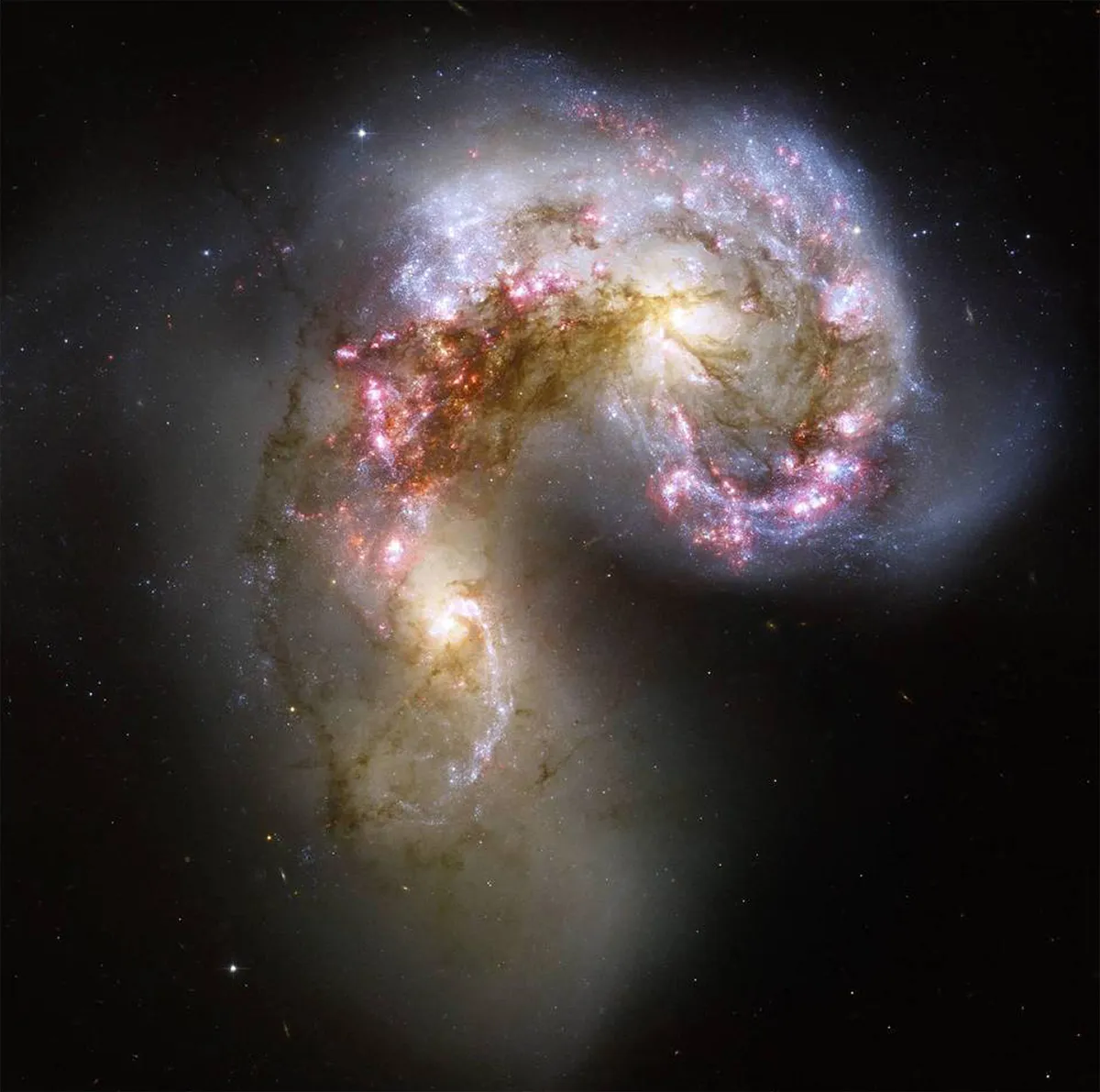
The Antennae Galaxies, seen above, are a merging pair of spiral galaxies undergoing a gentle collision that started a few hundred million years ago.
Long, antenna-like trails of stars pulled out from the centre of each galaxy give the pair its name. Billions of stars are being formed due to the disruption.
A similar merger could engulf the Milky Way when it eventually collides with the Andromeda Galaxy in an event known as the Andromeda-Milky Way collision.
The Cartwheel Galaxy formed when two galaxies collided 200 million years ago. The crash flung out a vast ring of gas, 150,000 lightyears across, which glows with new stars.
In similar collisions, the gas ring can be knocked 90º, producing a ‘polar ring’ galaxy such as NGC 5128 in Centaurus.
Distant galaxies
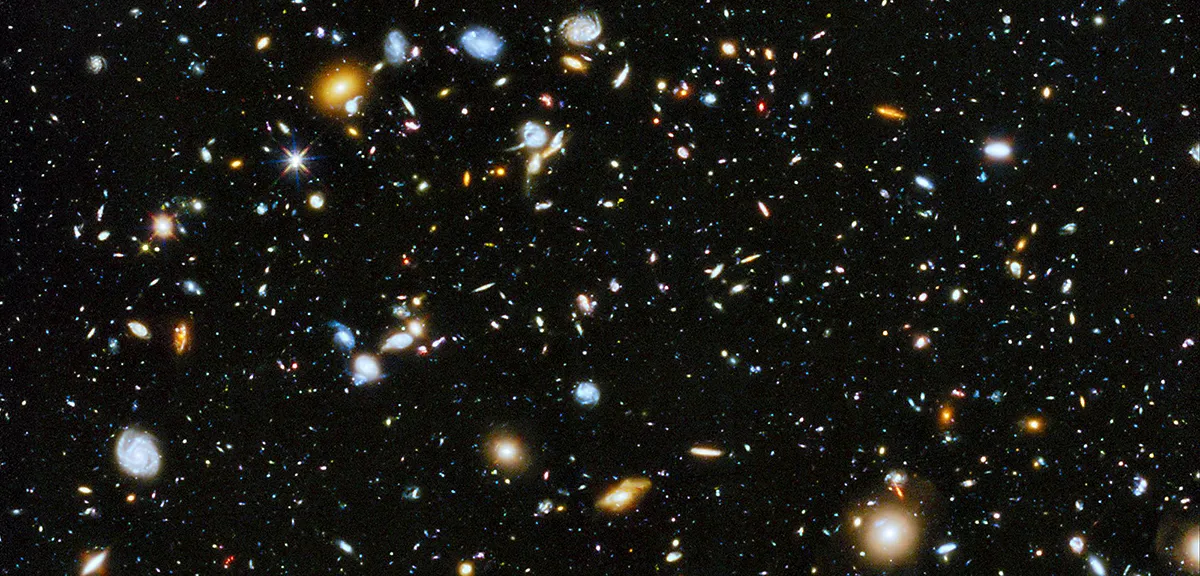
With the keen eyesight of the Hubble Space Telescope, astronomers can see across 90 per cent of the Universe.
One of the deepest images taken by astronomers so far is the Hubble Ultra Deep Field, which in 2004 revealed thousands of distant galaxies – most no more than flecks of light.
Because light travels at a fixed speed of around 300 million m/s, it takes a long time to traverse these vast distances.
So when we view the distant Universe we are also peering back in time. Distant galaxies tend to be bluer than ones nearby, suggesting that more stars were being formed in the past.
Many of these distant galaxies are irregular in shape as well. There were also more active galaxies in the young Universe.
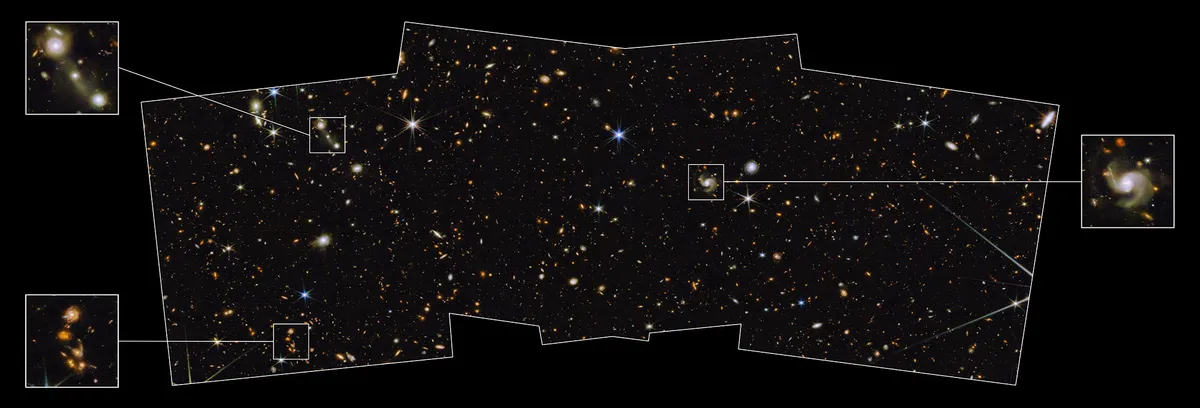
In 2022, astronomers released an image of distant galaxies 13.5 billion lightyears away, captured by the James Webb Space Telescope.
The image shows distant galaxies stretching into deep space, and covers an area of the sky just 2% of the area covered by the full Moon.
The image shows thousands of galaxies, the faintest of which are about 1 billion times fainter than what can be seen with the naked eye.
Active galaxies
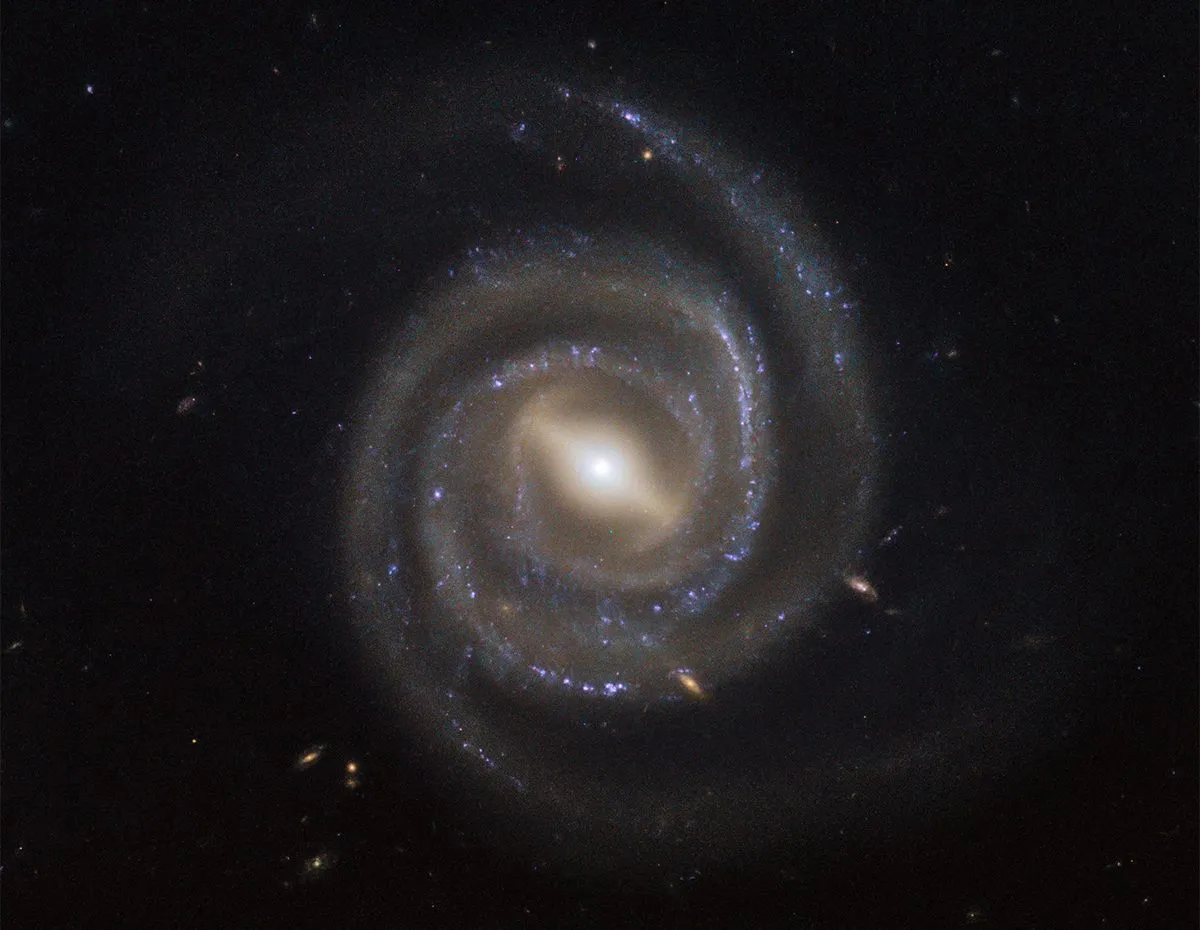
In active galaxies, the light from the accretion of gas, which is spiralling into a central supermassive black hole, outshines everything around it.
Some active galaxies shine so brightly that they can be seen right across the Universe. Around 10% also emit vast jets of energetic particles, which are visible to radio telescopes.
Dark matter in galaxies
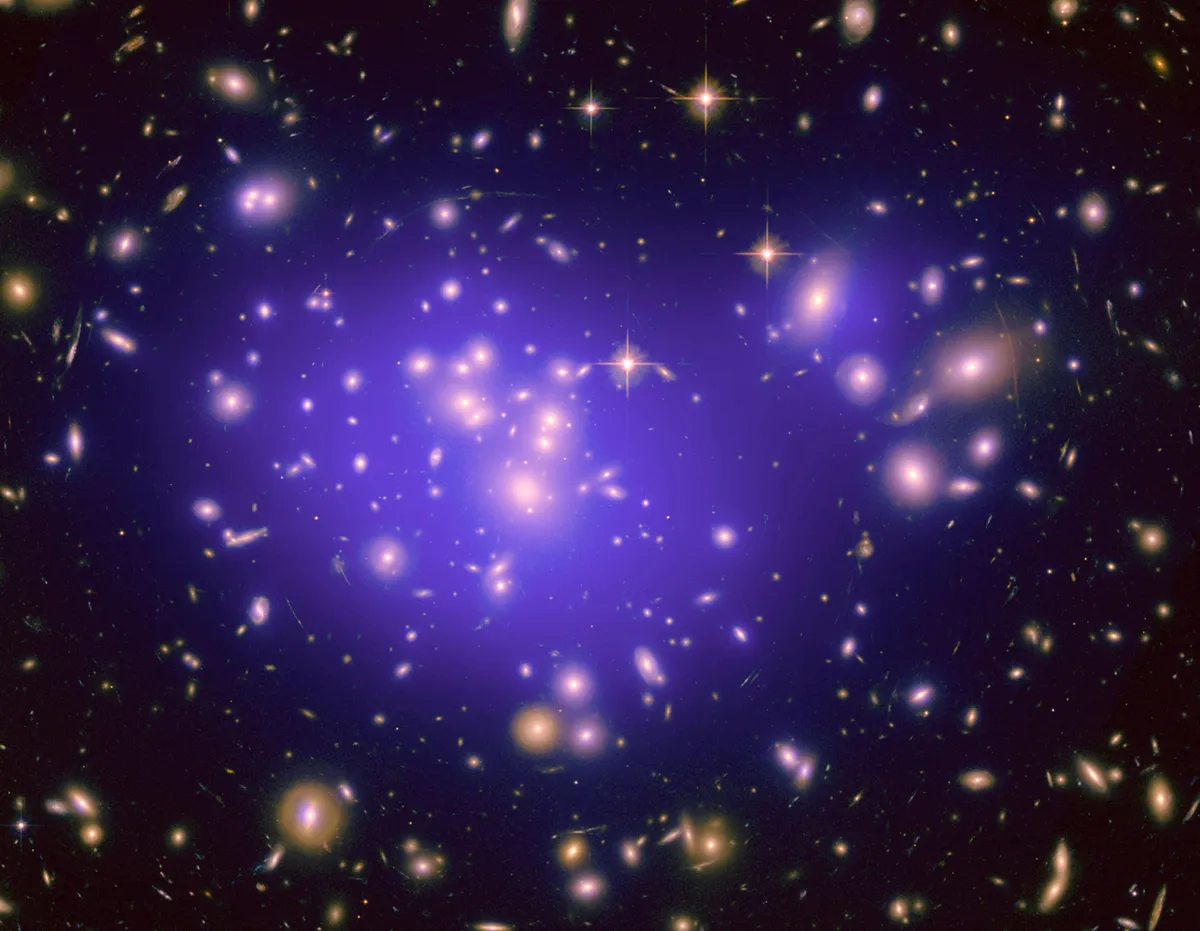
Galaxies are much more massive than they look. Around 90% of their mass is not in luminous stars and gas, but in unseen ‘dark matter’.
It’s arranged in a spherical halo, which governs the motions of the stars within.
This invisible cocoon, depicted in purple in the image of galaxy cluster Abell 1689 above, explains why the outskirts of spiral galaxies spin faster than if they were influenced by the quantity of stars and gas alone.
Dark matter also governs how galaxies clump together under gravity to form filaments and clusters.
Astronomers are still trying to discern what dark matter is. It must be exotic as it does not absorb or emit light; it may be in the form of subatomic particles.
Physicists are looking for candidates through varied experiments, such as catching neutrinos in Antarctic ice.
What's clear is that we may know a lot about galaxies, their history and evolution, and the role that dark matter plays in their composition, but we still have a lot to learn.
